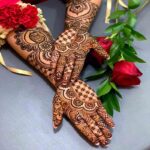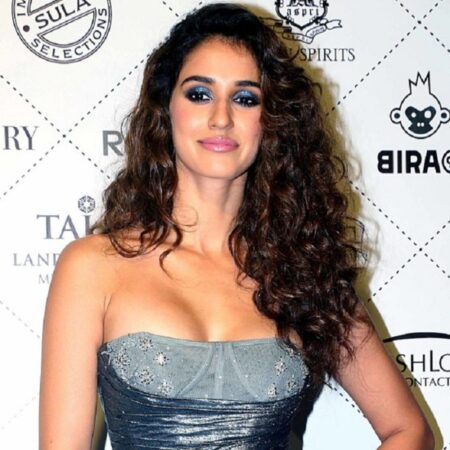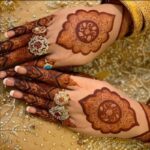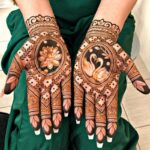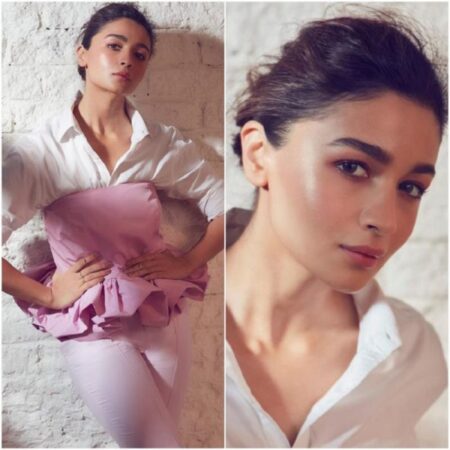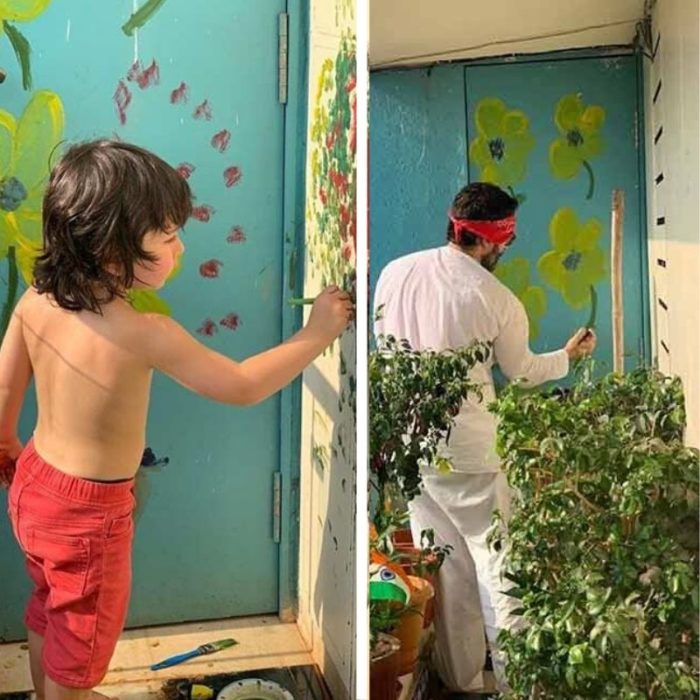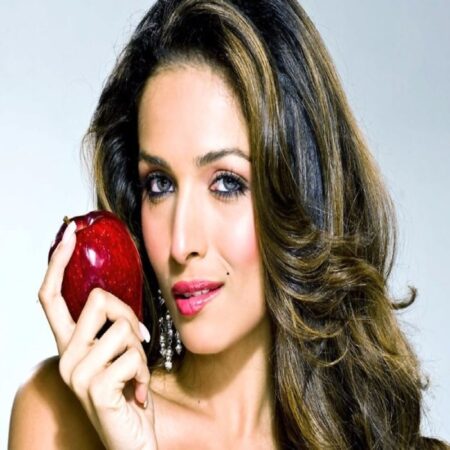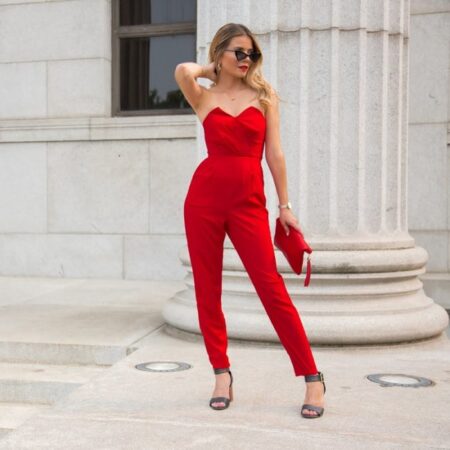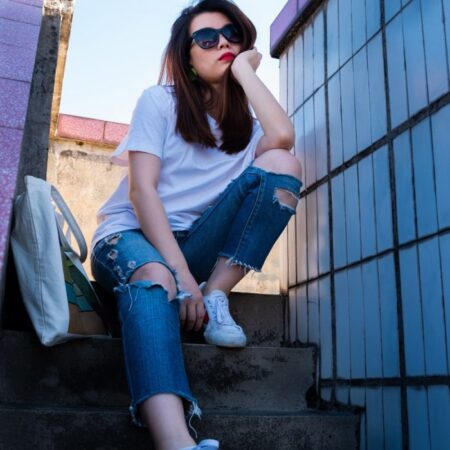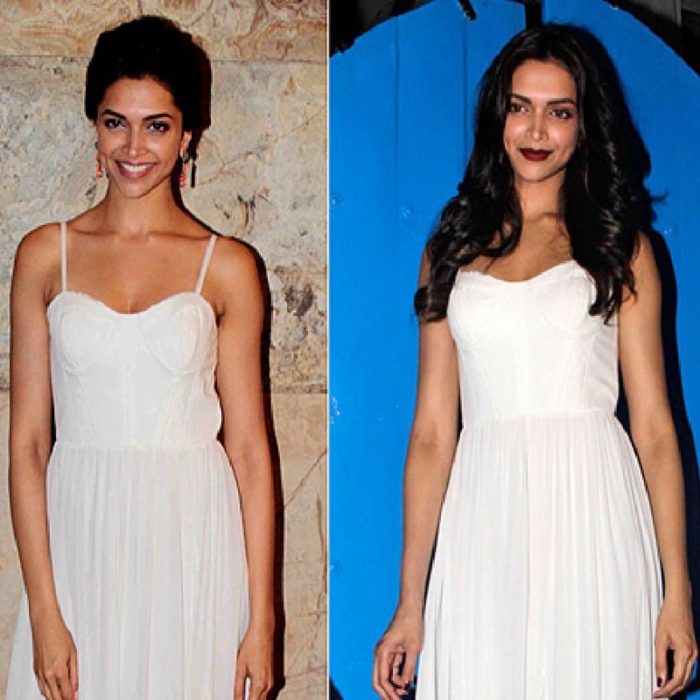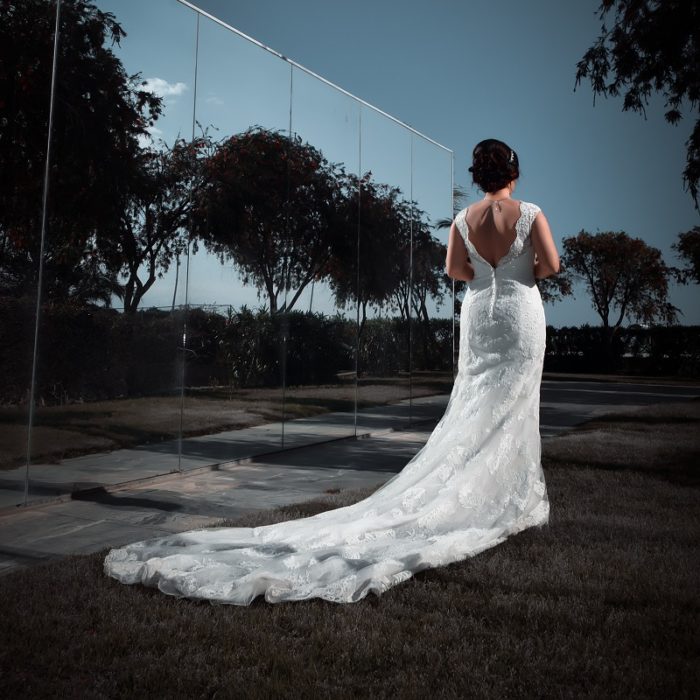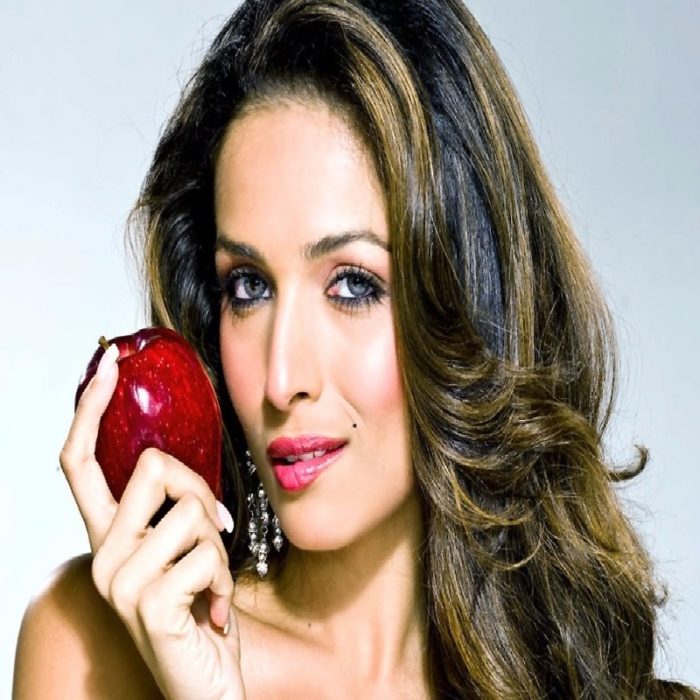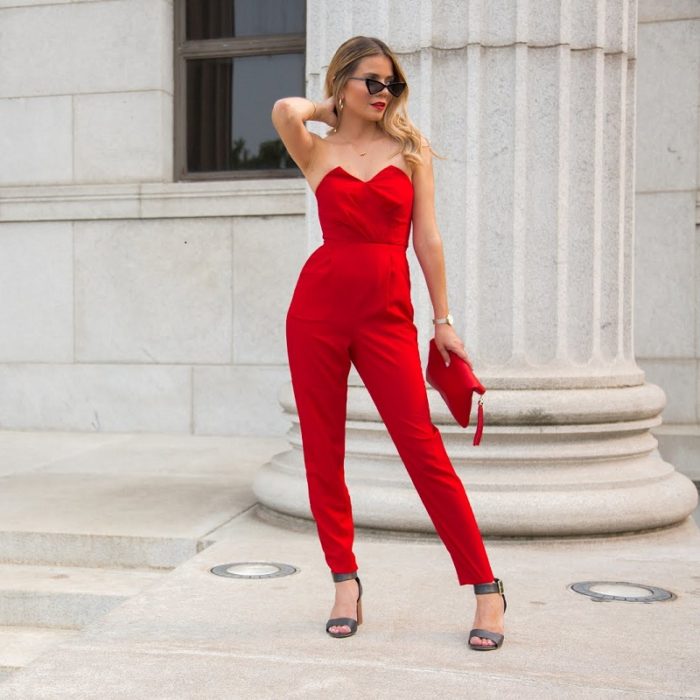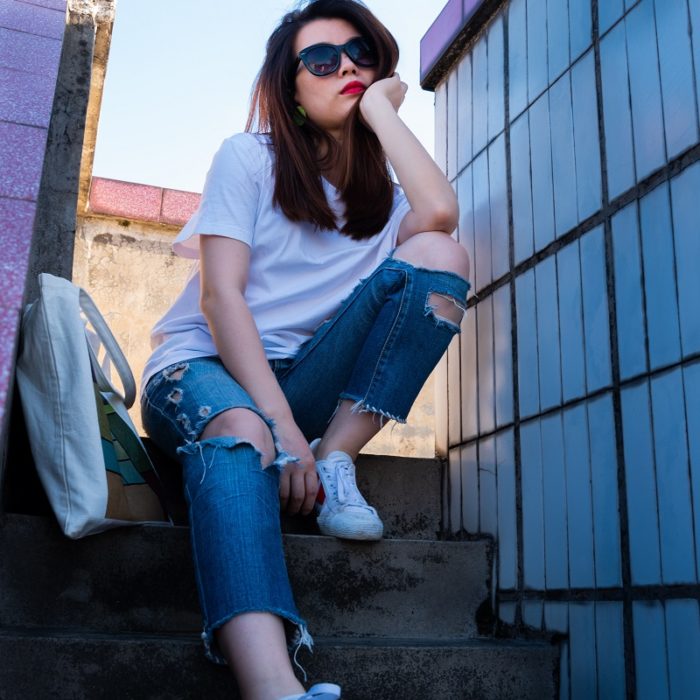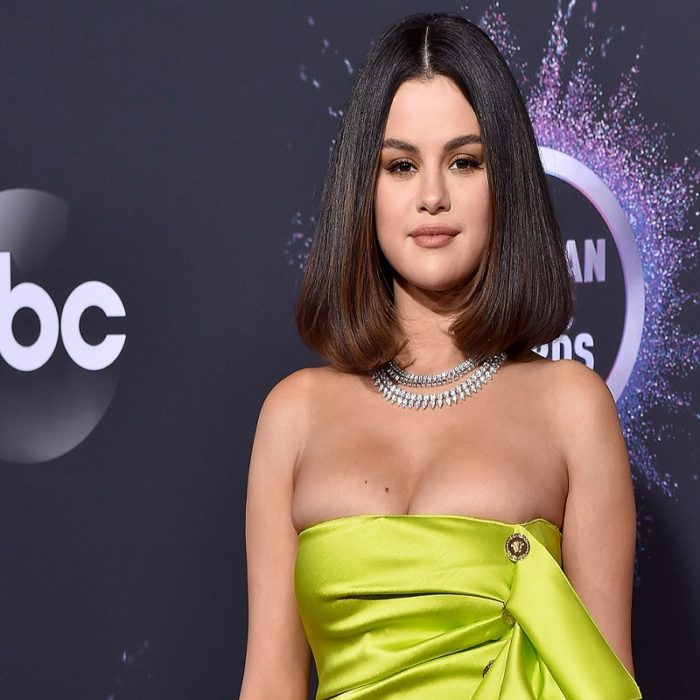Marriages in India: Indian Weddings
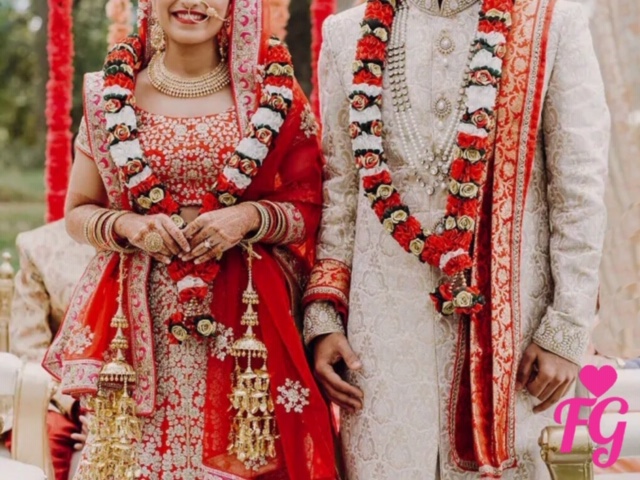
Marriage is said to be the most sacred ritual in India. There are different types of communities and as said we are a country of historic past and colourful culture.
It is established by the human society to control and regulate the sex life of man. Marriage is one of the deepest and most complex involvements of human relationships. It is a cornerstone of a society and very necessary part of the Indian social system. It is the very foundation of a civil society. It has been regarded by all the religions as the basis of a civilized society, sound moral system and domestic affection. Dr. S. Radhakrishnan observes that, “ Marriage is not merely a convention but an implicit condition of human society. It is an adjustment between the biological purposes of nature and the sociological purposes of man. It is an institution, it is a device for the expression and development of love”. Marriage in a lay man’s language is said to be a sacred bond between two people/souls. It is a physical, mental and spiritual companionship of two people in their lifetime. Marriage brings security and endurance in the life of those two people. Together they evolve and try to strengthen the human relationships.
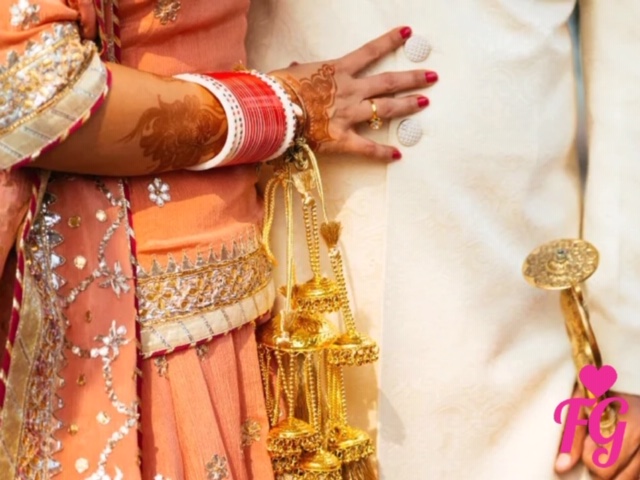
It is an institution of society that can have very different implications in different cultures. Its purposes, functions and forms may differ from society to society, but marriage as such is present everywhere as an institution. A country like India represents a diversity of cultures, traditions and implications. Different laws, diversified traditions, rituals, customs and beautifully different ceremonies have been involved in Indian Marriages. And obviously how can one expect to have same traditions, rituals and ceremonies in a country that has always been known for its diversified cultures. India is a country of Twenty-Nine States and Seven Union territories, where people follow different Religions, cultures and ideologies. Here marriages are celebrated not less than any festival and have been accomplished in a very sacred and harmonious manner. Since marriage in India has got a vast social significance too that is why it acts as a process that brings the people of the society all together. It facilitates certain reasons and ways through which it doesn’t only remain a sacred knot of two persons rather it becomes an auspicious tie of two families, communities and many other significant people who are somewhere related to it.
Indian Weddings are usually multi day affair and have a greater significance for the two families involved. They are best known for leisures, grandeur, rites and rituals, following of certain social obligations, rekindling of the kinship bonds, reviving the religious and traditional values and sentiments of the people. Indian Weddings are generally divided into three stages : pre-wedding, main and the post wedding and all these three stages account for numerous of graceful and lovely ceremonies and activities through which everyone conveys his/her joy and happiness. Indian Wedding is a ritual that glorifies the beginning of a companionship/ marriage. Every region of India may it be north, east, west and south, has a different way of celebrating and accomplishing weddings. Indian wedding customs and traditions differ from each region, ethnic group, sect, group or social classes in our country. Indian weddings are abundant with numerous rituals and steps of ceremonies. Families take care of every small detail even including the decoration at the venues of different ceremonies, designs of invitation cards, unique cuisines and expensive trousseau, because after all that is what makes an event of wedding unique and special. There are many kinds of weddings in India, North Indian Weddings, East Indian Weddings, West Indian and South Indian Weddings . There are also Religious weddings such as Hindu, Muslim, Sikh and Christian weddings, which are all different and unique in terms of their rituals and ceremonies. So from here onwards we would look into the different Indian weddings that how the weddings in the different parts of India differ from each other. What are their unique features, rites and rituals and what makes those weddings so much celebrated.
We shall now begin with the North Indian Weddings among which the Punjabi and the Kashmiri Wedding are the most prominent.
PUNJABI WEDDING
Punjabi wedding is full of splendor and excitement. It includes many rituals and ceremonies and each one of it has a significance attached to it. Right from the expensive and beautifully designed attires of the bride and her groom, huge decorations to lavish cuisines make the Punjabi wedding an event; full of enthusiasm and joy. Punjabi weddings are popular for their Bhangra dance. The Groom is usually dressed in Sherwani or Kurta Payjami on the day of the wedding and the bride astonishes everyone with her fully decorated and embroidered Lehnga-Choli/ Sharara.
The Pre-Wedding Ceremonies
Thaka ceremony; in which the two families and the particularly the boy and the girl agree to initiate into a wedlock and promise not to look into any more matrimonial proposals. This accomplishes with the exchange of gifts and presents in kind between the families of the girl and the boy.
Sagan/Mangni ceremony; in which the family of the girl visits the family of the boy with gifts, presents in kind, jewelry and cash to confirm the engagement. The family members, elders and other relatives of the girl’s family give gifts and cash to the boy.
Roka ceremony; that is a small ceremony having few important members/relatives of the two families. Both the families exchange gifts. It is an informal kind of engagement ceremony where the family, friends and relatives give presents, money and blessings to the couple to be. The girl is given cash and gifts by the family of the boy that finally confirms that their search for a suitable girl for their son has come to an end. They are eager and happy to find the girl for their boy. The maternal uncle (mama/maamu) gives a nose ring to the girl that she wears on the day of her wedding.
Sagai ceremony; that is a formal engagement ceremony and that which follows the wedding celebrations. The ceremony begins with the ‘tikka’ of the boy by the brother and the father of the girl. The girl’s family visits the family of the boy with many gifts, a silver tray with a few grains of rice and a tiny box containing saffron , fourteen dried dates (chuharey) covered with silver foil and a coconut wrapped in gold leaf. In return the girl’s family receives gifts, cash, big tray of seven types of dried fruits, sweets, clothes, and gold ornaments which are presented and adorned by the sister-in-law of the bride. The sister-in-law applies a tiny dot of Heena/Mehendi on the palm of the girl. During the ceremony the boy and the girl exchange their rings. Relatives, friends and family congratulate the couple to be and give blessing and best wishes.
Chunni Chadhai ceremony; in this, the boy’s family members and few relatives visit the girl’s family. The boy’s sister presents a beautiful ornate red colored ‘chunni’ to the girl and also gold jewelery. The relatives of the boy’s family present gifts and cash to the girl and give her blessings.
Sangeet, Haldi and Mehendi ceremony; these ceremonies take place at both of the families’ respective places. Before two days of the wedding, relatives and friends of the girl and the boy visit the families. This is the time to dance, sing and conveying the happiness and joy. Ladies of the families sing traditional songs accompanied with Dholki/Dholak. The Sangeet ceremony usually takes place in the almost whole night. Ladies sing and dance for late hours. Today this traditional trend has been little change, people prefer to have a DJ and loud Music to dance and for enjoyment.
In the haldi ceremony the turmeric or haldi paste mixed with mustard oil is applied all over the body of the girl by the sisters and sister-in-laws. Haldi is said to be a cleaning agent for the body, it purifies the body from many skin bacteria and makes the body pure and beautiful. It brings glow on the face of the girl. Same ceremony is held at the boy’s home. Haldi paste is also applied to the boy by his sister-in-laws (bhabi). After this ceremony both the boy and the girl cannot move out of their homes till the wedding day.
And finally the Mehendi ceremony in which the girl’s palms, hands and legs are painted with henna or Mehendi. This Mehendi is sent by the family of the boy along with a beautiful basket containing green bangles and red Bindi. Along with the girl other ladies and girls of the family enjoy the Mehendi ceremony, they also apply henna on their hands. A basket containing Bindi, bangles and cash is also sent to the mother of the boy by the family of the girl on this occasion.
The Wedding Ceremonies

On the day of the wedding in the afternoon the ‘Chuda’ ceremony takes place in which the maternal uncle (mama) and aunt (mami) of the girl gifts her the red and cream colored ivory bangles. Before the girls sits for the chuda ceremony she takes a bath with the holy water brought by her sisters and sister-in-laws from the nearby temple. The girl is not supposed to see the Chuda hence the bangles are covered by a piece of cloth or handkerchief. Afterward mama and mami tie the ‘Kaliraas’ with the Chuda worn by the girl. And after this the girl is supposed to get ready for the wedding.
At the home of the boy the Gharoli ceremony takes place before the few hours of the wedding, in which the sister-in-law (bhabi) of the boy brings water into a pitcher from any nearby temple. Everyone dances and enjoys while walking down to the temple. When the sister-in-laws returns back from the temple she asks for a ‘Shagun’ in the return of the water she has brought. Then she is gifted with a handsome amount of cash and gift from the mother of the boy. And she gives the pitcher of the water to the mother and afterwards the boy takes a bath with that holy water and get dressed.
Sehrabandi Ceremony; in this the groom has to get dressed in his wedding attire and a pink turban is tied by either the father or any elder male relative of the family. Then the sisters of the groom tie the Shehra on the head of the groom and perform a ‘Puja’. During this Puja the sister-in-law (bhabi) of the groom lines his eyes with surma/Kajal to ward him from any evil eye. This ceremony is called Varna Ceremony. There is a person during the wedding who is supposed to be with or to protect the groom all the times. He is usually the young nephew, cousin or brother-in-law (Jija ji sister’s husband). Sehrabandi is followed by Ghodi Chadna. This is the ceremony in which the boy sits on a mare and reaches the wedding venues. The groom’s sisters and other cousin sisters feed the mare and perform little puja. Then the elders of the family distribute cash among the poor and the mare begins to walk.
After reaching the wedding venue the family and relatives of the bride, greet and welcome the family and relatives of the groom. This welcome ceremony is known as Milni Ceremony. In this the elder family members of the bride’s family give Shagun in kind and cash to the close family and relatives of the groom. After this the guests are all invited inside the venue.
https://googleads.g.doubleclick.net/pagead/ads?client=ca-pub-6318878521536714&output=html&h=557&slotname=4858446331&adk=1649405542&adf=2257199261&pi=t.ma~as.4858446331&w=850&lmt=1680541864&rafmt=11&format=850×557&url=https%3A%2F%2Ffashiongoalz.com%2Fmarriages-in-india-indian-weddings%2F%3Fpreview_id%3D2182%26preview_nonce%3Dfd3407c838%26preview%3Dtrue%26_thumbnail_id%3D2183&wgl=1&uach=WyJXaW5kb3dzIiwiMC4xLjAiLCJ4ODYiLCIiLCIxMDkuMC41NDE0LjEyMCIsW10sZmFsc2UsbnVsbCwiMzIiLFtbIk5vdF9BIEJyYW5kIiwiOTkuMC4wLjAiXSxbIkdvb2dsZSBDaHJvbWUiLCIxMDkuMC41NDE0LjEyMCJdLFsiQ2hyb21pdW0iLCIxMDkuMC41NDE0LjEyMCJdXSxmYWxzZV0.&dt=1680541848954&bpp=1&bdt=1190&idt=1173&shv=r20230329&mjsv=m202303280101&ptt=9&saldr=aa&abxe=1&cookie=ID%3Da7ba75a470ec33e8-223407d6f6de00e8%3AT%3D1680435486%3AS%3DALNI_MbXY5U0JCGiR6K4RGKUIwOUzkxQOw&gpic=UID%3D00000a3b3ad9905f%3AT%3D1680435486%3ART%3D1680526695%3AS%3DALNI_MaVc7ZP4Z4Sbii3L_ER0hxnwwavcw&prev_fmts=0x0%2C850x280%2C380x280%2C270x600%2C270x928%2C270x225%2C1200x280%2C850x128%2C728x90%2C850x557%2C850x200%2C850x246&nras=2&correlator=1615871101918&frm=20&pv=1&ga_vid=538735516.1680435485&ga_sid=1680541849&ga_hid=644595277&ga_fc=1&u_tz=330&u_his=1&u_h=768&u_w=1366&u_ah=728&u_aw=1366&u_cd=24&u_sd=1&dmc=2&adx=90&ady=7155&biw=1349&bih=657&scr_x=0&scr_y=4858&eid=44759842%2C44759927%2C44759876%2C31073106&oid=2&pvsid=1549146249513051&tmod=197023859&uas=3&nvt=1&ref=https%3A%2F%2Ffashiongoalz.com%2Fwp-admin%2Fpost.php%3Fpost%3D2182%26action%3Dedit&fc=1920&brdim=0%2C0%2C0%2C0%2C1366%2C0%2C1366%2C728%2C1366%2C657&vis=1&rsz=o%7C%7CeEbr%7C&abl=CS&pfx=0&fu=128&bc=31&ifi=9&uci=a!9&btvi=9&fsb=1&xpc=qHsc1WVZVH&p=https%3A//fashiongoalz.com&dtd=15819
Jaimala Ceremony; in this the bride and the groom put a garland (Varmala/Jaimala) of flowers around each others necks. This symbolizes the acceptance of each other as life partners and regard and love for each other. Relatives, family and friends shower flower petals on the couple as a gesture of blessings and best wishes for the couple.
The midnight it is the time for the Kanyadaan Ceremony, in this ritual the father of the bride put her hand into the hand of the bridegroom and bestows his daughter to the groom as his whole life partner. And with this begins the Phere Ceremony in which the bride and the groom take Seven Vows by taking seven circles around the Vedi/ Sacred Fire. Then the groom applies Sindoor to the bride’s hair partition and ties a Mangalsutra (a necklace beaded with black and golden beads) around the neck of the bride. After following all these rituals the couple is said to become the husband and wife then they take the blessings of the elders of their respective families by touching their feet.
The last ritual of this wedding is the Vidaai ritual in which the bride leaves her parental home and makes her permanent departure from there. This is a very emotional moment for everyone. The bride is given hands full of rice to throw over her head. These rice grains are then kept by the mother of the bride. Throwing the rice grains means that the while making a leave from the parental home the bride wishes for a permanent prosperity in her home. She gives away her blessings and wishes through the means of these rice grains. The bride, her family, relatives and friends get too much sentimental at while saying the goodbyes. The brother of the bride accompanies her till her new home and then the family of the bride groom thank him with a gift. At the new home, the bride is welcomed by a puja done by her mother-in-law. Usually the newly wedded couple is given a Reception party by the new family in which the family and relatives of the bride are also invited. After one day of marriage the brother of the girl comes to take her for a Pag-Phera Ceremony in which the bride goes to her paternal home for one day and in the evening her parent-in-laws and the husband comes to take her back. After the dinner, The family of the girl gives gifts and cash to the new family members and to the wedded couple.
KASHIMIRI WEDDING
Kashmiri weddings are more popular for its beautiful and traditional attires. Kashmiri wedding is itself a unique occasion to be attended and after all Kashmir is one of the most beautiful places thereby its culture and traditions have been fascinated for a long time back. Kashmiri weddings usually initiated with the matching of Horoscopes knows as Teknis. Kashmiri people give a lot of importance to the status, reputation and the background of the family while matching the horoscopes of their respective girls and boys. Once the horoscopes are being matched satisfactorily, the Purohit or the Pandit of the families fixes up a suitable date for the wedding. And with this the ceremonies of the Kashmiri wedding begin.
The Pre- Wedding Ceremonies :
Vanna Ceremony; it is a formal engagement of the boy and the girl that takes place between the two respective families, relatives and friends of the groom and the bride-to-be. This is a traditional ceremony performed in a temple and includes a formal exchange of flowers between the two families. The exchange of the flowers signifies the formal commitment of wedlock. On this auspicious occasion the family of the girl serves a traditional meal to the family and the guests of the groom-to-be. And the eldest aunt of the girl, cooks ‘Var’ that is a special rice pudding. The family of the girl presents gifts, money, dried fruits and a pot of ‘Nabad’ or Mishri to the family of the boy.
Livun Ceremony; this is a kind of traditional cleansing of the home before the wedding ceremony. All the married ladies of the family are invited to the home. And the family cook or the ‘Waza’ is supposed to set his oven or assemble the mud and brick oven also known as ‘War’ at the backyard of the home. Waza cooks all the traditional Kashmiri cuisines for the further ceremonies of the wedding.
Wannun Ceremony; prior to the wedding day every evening the music sessions take place at the homes of both of the families (boy and girl) separately. All the family members, friends and neighbors attend these fun filled music session. Everyone sings, dances and enjoy to the fullest. It is the time to express the joy and happiness for all the family members.
Manzirat Ceremony; this ceremony begins with decorating the main entrance of the home and further followed by an elaborated ritual bath by the bride-to-be. This ceremony takes place one week prior to the wedding. The eldest aunt of the girl then applies Heena/Mehendi or Maanz on the hands and feet of the girl. Women who are invited for this ceremony are feasted by a lavish traditional Kashmiri cuisines prepared by the Waza. The eve of the ceremony is celebrated by the music and dance session by the family members and relatives.
Two or three days prior to the wedding ceremony there is a Kashmiri ritual to send 51 thaals (big flat trays) filled with dried fruits, fresh fruits, sugar, khajur , Gota; a special mixture, ghee and sweets. Same day or one day later of this ritual there is also a ritual of sending flowers jwllery to the bride-to-be by the family of the groom-to-be. Specifically known as ‘Phoolon Kaa Gehna’ this is first shringar of the bride-to-be.
Mehendi Ceremony; on the Kashmiri wedding, the Mehendi ceremony takes place one or two days before the wedding. This ceremony is initiated with a puja done by a priest. The hands and feet of the girl are painted beautifully with Heena.
The Wedding Day
Diugun Ceremony : on the wedding day in the morning the Digun ceremony is performed in which the elders of the family applies a paste prepared from curd, gram flour and saffron on the head of the bride and the groom –to –be .This ceremony takes place at both of the families separately. The parents of the bride gift her clothes, jewelry and other essentials. One important jewelry is also gifted with them is; ‘Dijaru’ that is an ear ornament and symbolizes the a Kashmiri woman is married. ‘Sanzaru’ is also sent by the family of the groom for the bride-to-be. This is a kit containing cosmetics, pamur (shawl), sindoor and also a special betel leaf wrapped in gold or silver foil.
Devgon ceremony; this ceremony symbolizes that the bride and the groom has entered into the grihastha ashram from their bachelorhood. In this ceremony the bride and the groom separately at their respective home worship God Shiva and Goddess Parvati. Then there is a havan puja organized at the place of both of the families. And then the ceremony ‘Kansihran’ is performed in which the young girls of the family hold a veil over the head of the bride-to-be and the other family members throw a mixture of curd, rice, milk and flowers. Then the maternal uncle of the bride presents a pair of new clothes to the bride-to-be.
On the wedding day the groom ties a turban that Is called ‘gordastar’. The paternal uncle of the boy assists him in tying his turban. On the eve of the wedding when the family of the groom arrives at the venue the fathers of the two respective families exchange jaiphal or nutmeg as a gesture of creating a new bond or relationship. The couple is then fed nabad by the oldest female member she gives her blessings to the couple by kissing their foreheads. Two pots filled with rice are given to the poor people. The priest or the Purohit conducts a brief Puja called the dwarpooja and then the couple moves towards the lagan mandap.
‘Aathwas’ is a Kashmiri wedding ritual which requires the bride and the groom to cross their arms and hold their hands. ‘Mananmal’ ; a golden thread is tied over the heads of the couple. The left foot of both the bride and the groom is placed over a stone called ‘kajwat’ and then the Pheras or seven steps are commenced around the sacred fire. After the Pheras the couple feed each other with rice. They are seated and the elders, relatives and family members give flowers to the couple. The guests of the wedding are treated to a lavish meal consisting of Kahwa, kangach, marchwangan Pokore, Madur pulao, shufta and fried nuts.
The Post Wedding Ceremony :
When the newly wed couple arrives the oldest aunt refuses to let them enter the home until the bride gifts her a jewelry or cash. Once the aunt receives her gift she let the couple enter the home. Then she feeds the couple with nabad and kiss their foreheads. In the joy of celebrating a pair of pigeons is released. The couple then exchanges their Mananmals which are tied on their foreheads.
In the post wedding ceremonies the ritual called Satraat and Phirlath is conducted in which the bride visits her home just after her marriage. She has been gifted a 6-yard big Pashmina shawl by her parents. And Roth Khabar is also gifted to her by her parents that is a 1 meter long and 2 ½ meters wide cake decorated with nuts.
We are now headed towards the wedding of the Eastern India. Let us explore the unique traditions and rituals of east Indian weddings among which the Bengali, Oriya, Manipuri and Assamee weddings are discussed at below:
BENGALI WEDDING
Bengali weddings take place in the state of Bengal and are mostly famous for their specific rituals like the ritual of blowing the conch shell and the ritual of making loud auspicious sound called Ooli made by many women at a time, with their tongues and by beating the palm on the mouths. These rituals are basically followed to draw the full attention of all the guests towards the wedding ceremony. The groom is dressed in a white silk Kurta and dhoti and wears the ‘Topor’ that is a paper and shawl conical hat. The bridal dressing is a ritual in itself, she is dressed in a red colored sari. The fanciful part of her attire is the ‘mukut’ that she wears by pinning it well to her veil. Her face specifically her forehead till the corner of her eyebrows is decorated with Chandan paste by making beautiful hand art.
The Pre-Wedding Ceremonies :
Ashirwad; this is an initial ceremony that symbolizes the beginning of an auspicious occasion in a family. This ceremony is followed at both of the homes of the bride-to-be and groom-to-be. This is followed by putting the ‘Chandan-Tilak’ and offering gifts, a piece of jewelry and some ‘Daan’ of Rice and Darba Grass. Rice symbolizes the prosperity and grass symbolizes that the groom will treat her wife with utmost tenderness. Finally sweets are distributed.
Decoration; this is an important part of the pre wedding rituals of the Bengali weddings. In this the main entrance of the home is decorated with a ‘Rangoli’ having the colorful images of a fish, and a lotus plant which is supposed to be auspicious. Then a small banana tree is placed at the center of the entrance, under which a copper vessel is placed called ‘Mangol’. The main door is decorated with a string of mango leaves and this string would be tied for the next one year after the wedding.
Vridhi; this is a ritual which is performed by the respective paternal uncle of the bride and the groom-to –be at their respective homes separately. This ritual is basically about offering worship to the ancestors of the family. The priest brings the idol of god Narayan for worship by using the ‘Puja saamigri’ ; flowers, incenses (agarbattis) and lamps (diyas). The paternal uncle who performs this ritual has to be on a liquid diet for the whole day.
Ai Buro Bhaat; this is a grand supper feast for the whole family and the relatives, a night before the wedding.
Wedding Piris; Piris are basically beautifully designed wooden planks which are made and brought by the close relatives of the bride’s family. These are used for the couple to sit on the wedding day. These planks are being brought a day prior to the wedding.
Dadhi Mangal; this ceremony takes place at both of the groom and the bride’s homes separately. In this ten married women along with the bride/groom accompany to a nearby pond/lake. This is to invite the Goddess Ganga, the women worship there and while returning back they bring back a pitcher filled with the water for the bath of the bride/groom. At the homes the groom/bride is treated to a meal consisting of ‘Macher Laija Bhaja’ (fried fish) along with ‘Jal Dhana Bhaja’ (rice cooked in water) and also curd and chiruya.
Haldi Uptan; the bride-to-be is made to sit in the midst of four plantain trees, there are total four trees placed at the four corners of the room. These trees are supposed to be very auspicious. Then a paste of turmeric (haldi) and mustard oil is applied on the whole body of the bride. This paste is prepared by five married women who are called ‘Eyo- Stree’. After the Haldi paste is fully applied the bride takes a bath with the water that was brought from the holy pond/lake. The bride sits on ‘Sheel- Nora’ and all the women walk encircling her and shower the holy water on her. A huge raw fish called ‘Rohu’ is also taken and decorated like a bride. Finally sweets are distributed among the guests.
Shakha Paula; in this ritual seven married women decorate the bride’s hands with bangles made up of Shankha (shells) and Paula (coral). The priest recites the Vedic mantra all through this ritual. The shank is supposed to bless the bride with serene nature like as a moon while the coral is good for her health.
Tattvas; are basically the gifts which are exchanged between the families of the bride and the groom during and after the wedding. The gifts sent to the groom’s family by the bride’s side are known as ‘Adibhas Tattva’ and the gifts sent to the bride’s home are called ‘Gae Hallud Tattva’.
Kubbi Patta; this is a very small ritual but have an important significance. This ritual is followed to regard the Saint Kuber by placing three big metal glasses filled the upper edge with Khoi (pulses), dhaan, and crushed rice at the shrine of the saint.
Sanan; this Sanan or the bath is mandatory for both the bride and the groom. In this ritual a paste of turmeric and mustard oil is applied on the body of the bride and the groom. Then both have to wear a new pair of clothes which should be given to the ‘napti’ (barber) afterwards.
Mandap; it is the venue where the wedding ceremony takes place, therefore it is decorated in a special manner by placing a small banana tree and by making a huge Alpana with a paste of rice. Mandap is beautifully decorated with flowers, lamps and lights.
The Wedding Ceremony
The wedding day begins at 4 am for the bride as she has to wake up early to take a bath with holy water and then wears a new white colored saree with a red border. This white and red saree symbolizes purity and charisma. After the bath she has to eat puffed rice with curd and sweets before the dawn. At other hand the elders of the family perform vridhi ritual again to receive the blessings of their ancestors for the accomplishment of the wedding ceremony peacefully.
In the evening the groom gets dressed in white dhoti and Kurta. As a custom he has to take his mother’s permission before leaving for the wedding venue. The mother of the groom gives him a glass of sweet milk that the groom has to drink before leaving. The bride’s family sends a person along with a car to take the groom to the venue of the wedding. In this ritual as well as the groom has to take his mother’s permission. The mother stays back at home while other family members and relatives leave after the groom has left. In the Bengali wedding both the mothers of the groom and the bride stays at the home since it is believed that this ritual will protect the couple from any ‘evil-eye’. A young boy accompanies the groom in the car and he wears the look alike clothes as the groom has worn. This young boy is called ‘Neet-bar’.
As the groom arrives at the venue, all the ladies welcome him with the sound of conch-shell and ululation . An older female from the bride’s family welcomes him with a silver plate. This plate is touched to the forehead of the groom then to his feet and again to his forehead. Then the groom is offered Sharbat and sweets to eat. Holy water is sprinkled all around the entrance of the venue when the groom enters into the venue.
Afterwards it is the time for the couple to exchange garlands of flowers with each other. The priest ties their hands together with a sacred thread that is known as the ‘Sampradan’ ceremony, chants the mantras and the groom is given a new pair of white dhoti and Kurta which he has to change and get dressed in. After this the bride is brought into the Mandap where she enters while sitting in a Piri hold by four members. She keeps her face covered with a betel leaf and before sitting she is being rotated seven times around the groom and then she is made to sit in front of the groom its when she removes the beetle leaf from her face. This is the first when the couple looks at each other face to face, this is called ‘Subha-Drishthi’. Then begins the Yajna ceremony in which the couple sits on the piris around the sacred fire. Afterwards rituals like ‘Saat-pheras’ and ‘Sindoor-Daan’ takes place. ‘Anjali ceremony’ is also an important part of a wedding in which the groom takes the bride’s palm into his and the brother of the bride fill it with popped rice and then both groom and the bride offer it to the sacred fire. After the sindoor-Daan ritual the couple is considered as married. The further event is followed by a splendorous meal for all the guests of the wedding.
The Post Wedding Ceremony
Manpan; after the wedding the family of the bride and the groom exchange gifts with each other. The groom’s family gives gifts to the bride and the family of the bride also gives gifts to the family members of the groom.
Bashi Biye; next morning of the wedding the couple goes to the mandap and worships the Lord Sun in the presence of the priest the groom also embellishes the forehead of the bride with vermilion (sindoor) and this he does by looking into the mirror.
Bidaai; this is the departure time of the bride from her paternal home. The couple takes the blessings of the elders of the family by touching their feet. With band and fireworks the couple leaves. Before leaving the groom picks up the silver idol of the goddess Parvati that was placed in the Yajna ceremony. When the couple reaches the groom’s home the mother of the groom welcomes the bride by doing ‘Puja’ and puts a vessel filled with rice in front of her foot. The bride tilts the vessel to spill the rice on the floor and then steps into the home. This ritual signifies that the new bride would bring wealth and prosperity with her arrival in the family. The couple sits and the groom places the silver idol of goddess Parvati into a plate and then writes the new name of the bride into the same plate. The mother of the groom sits in between of the couple and looks at the face of the bride through a mirror this is called ‘Soonmukh-Bhagne’. Then the bride gives sugar to all the members present over there and the members call out the new name of the bride in the form of verses, several times.
ORIYA MARRIAGE
Oriya weddings are an integral part of marriage system of Orissa. These weddings are not so extravagant and they have certain rituals like Hindu weddings but there are also few rituals which make them different in their own respect. The Oriya brahmins’ wedding usually takes place in the day time and the Oriya wedding of non-brahmins’ in the evening times preferably. The mother of the groom does not take part in the ceremony. Oriya weddings are popular for their simplicity and for not being a show-off affair. The bride is dressed in a saree preferably of colors; red, orange or majenta. The females of the bride’s family enthusiastically make over the bride. Saree of different variety of fabrics (silk. Cotton or chiffon) are worn by mostly females who attend the oriya wedding. The groom is also dressed in elegant silk dhoti and Punjabi. Punjabi is an elegantly adorned garment available in various colors. And during the wedding ceremonies the groom drapes a cloth called ‘Jor’ over his upper bare body. The oriya wedding begins with a very first yet small ceremony called ‘Nirbandh’ that is quite similar to the ceremony of engagement. In this the father of the groom and the bride promise to get their children settled in a wedlock.
The Pre- Wedding Ceremonies
Jayee Anukolo Ceremony; after the ceremony of Nirbandh the invitation cards are to be distributed. The very first invitation card is presented to the Lord Jagannath and the second invitation is presented to the maternal uncles of both the bride and the groom.
Mangan Tradition; this is the haldi ceremony in which a paste of turmeric is applied over the body of the bride that is further followed by a holy bathe of the bride. All the elder and married females of the family bless the bride.
Jairagodo Anukolo; this ceremony begins with the feeding of the fire after the ritual bathe of Mangano a paste of turmeric and sandal is applied all over the body of the bride.
Diya Mangula Puja; this ceremony takes place in a temple of a goddess (deity). In this ceremony the female barber offers the bride’s new saree, toe ring, sindoor and bangles to the goddess and prays for a long and happy married life of the couple. The deity of the temple is then worshiped and offered the Puja.
Barajatri and Baadua Pani Gadhua; barajatri ritual is performed when the groom and his family and relatives arrive the venue of the wedding. When the groom arrives at the mandap he is being welcomed with a Puja and Tilak, rice is an essential element of this Tilak. After the groom arrives the bride is informed about his arrival to the mandap and then the ritual of Baadua Pani is performed in which the bride is made for a ceremonial bathe.
The Wedding Ceremonies
Kanyadaan Ritual; this is a ritual in which the father of the bride gives her hand to the groom and takes a promise from the groom that he will take care of the bride in the whole life. Seven heaps of rice grains are made which symbolize the seven hills and then the ‘saptakulaparwata’ are worshipped. The priests chant the mantras.
Haath Ghanti; after the couple takes seven rounds (saat-pheras) around the sacred fire, the ritual of haath ghanti is performed in which ‘Laja’ the puffed rice is given into the hands of the groom and the bride by the brother of the bride and then both groom and the bride offer those Laja as a sacrifice to the God of Fire.
The Post-Wedding Ceremonies
Grihapravesh; this is known as ‘Laajo Hom’ in which the newly wed couple arrives at the home of the groom where the mother of the groom welcomes the bride. In Orissa the bride is believed to be the avatar of Goddess Laxmi who brings wealth and prosperity in the home that is why rice are tossed onto the way of the wedded couple while entering the home.
Astha Mangla; on the eighth day after the wedding the newly wed couple is invited by the bride’s family for a lavish dinner. When the couple arrives at the home of the bride the conch shell sound is made and while returning back to the home the bride is gifted sarees and jewelry by the groom.
MANIPURI WEDDING
A Manipuri wedding is an extravagant affair in the state of Manipur. There are few strict customs which are followed while fixing up the wedding such as, clan marriages are restricted but there is a freedom for matchmaking outside one’s community and castes. The Magh tribes have full freedom to choose the mates of their own choice. The Manipuri wedding attires are elegant, traditional and beautiful. The bride has to wear the traditional attire called the ‘Raslila Skirt’. The groom wears white dhoti, Kurta and a turban. ‘Kirtan’ and ‘Shahnai’ sounds make the wedding ceremony joyful and a memorable occasion.
The Pre-Wedding Ceremonies
Hinaba; it is the very first step where the family of the boy visits the family of the girl and they match the horoscopes of both the girl and the boy.
Yathang Thanaga; when both the families agree over the horoscopes match then the consent of the girl’s parents is obtained which is known as Yathang Thanaga.
Waroipat Puba; in this step the family of the boy’s family comes in the girl’s home and brings many food items to fix up the wedding.
Heijapot; this is a formal announcement of the wedding and a kind of engagement ceremony performed among the relatives and friends of the two families. The family and relatives of the groom-to-be bring fruits, gifts and presents for the bride. The priest fixes up the date and the rituals of the wedding on the same day.
The Wedding Day and Post Wedding
A Manipuri wedding is an affair of extravagance and splendor. People purely look into the prestige and the status of the groom’s family. The more cars arrive on the wedding day the greater the status would be considered by the groom’s family. The groom is welcomed by lighting a lamp and a young boy washes his feet. While this ritual takes place kirtan’s sound echoes all around the venue. Then two females from both of the families release two Taki fishes in the water. It will be an auspicious sign if the fishes move side by side. God and deities are offered with lavish food items and worshipped in order to get their blessing for the married couple. Next day of the wedding the family of the bride visits the new home of the bride to seek her well-being in her new family.
ASSAMESE WEDDING
Assamee wedding takes place in the state of Assam. Assamee weddings are very traditional, simple yet very elegant. These weddings are followed by Vedic customs and mantras. The traditional wedding song is known as ‘Biya Naam’. The chanting of ‘Uruli’ is a famous trend of assamee wedding, that is made by the females by rolling their tongues.
The Pre-Wedding Ceremonies
Juran Diya; this is the initial ceremony that takes place at the home of the bride-to-be. The bride’s mother invites the mother and other women relatives of the groom-to-be. The mother of the bride welcomes the lady guest with a brass plate called ‘xhorai’ in which she puts betel leaves and betel nuts and neatly covers it. The mother of the groom-to-be gives gifts to the bride-to-be and her mother.
Tel Diya; this is an important ritual performed by the mother of the groom prior the wedding day. In this she put a ring and betel on the hair partition of the bride and then she pours oil on the betel thrice at times. Then she adorns sindoor in the hair partition of the bride and gifts her the wedding trousseau.
Pani Tola and Nuani; this ceremony involves the collection of sacred water for the ceremonial bath of the bride and the groom. This ritual is performed by the mothers of the groom and the bride separately at their respective homes.
The Wedding Ceremonies
Daiyan-Diya; this is a ceremony that is performed early morning on the day of the wedding. In this ceremony, sweet curd is sent to the bride at her home by the groom’s family. The bride eats half of the curd and returns back the rest of the half to the groom’s home.
Nau- Purush Shardha; this ritual is performed by the bride and the groom’s father. This ritual is to give regard to the last nine ancestral generations of the groom’s father’s and last three generations of the groom’s mother. It is an invitation to the ancestors for receiving their blessings for the
Ceremonial Bath; the mother of the groom and the bride visit the nearby lake or pond to fetch the holy water for the ceremonial bathe. They fill the pitcher with water and bring it home. This ceremony takes place before the wedding ceremony.
Wedding Reception; in the assamee wedding, the reception is held a day before the wedding day. Earlier these reception ceremonies used to be very simple where only curd, rice and a jogger were served, known as ‘Doi Jaalpan and Gur’. But now the trend has been changed, meals are now served by having a variety of many food items.
Wedding Ceremony; groom arrives at the wedding venue being dressed elegantly. He wears dhoti, Kurta along with a shawl on his shoulders. The bride’s mother welcomes the groom at the entrance of the wedding venue. She performs a little puja, Meanwhile the younger of the bride washes the feet of the groom and in return she asks for a handsome amount of cash. The bride’s brother lifts up the groom and take him to the wedding hall. The bride also comes while sitting on the shoulder of her elder brother. Then the couple sits in front of the sacred fire and exchange their garlands of flowers. The groom adorns sindoor in the hair partition of the bride. Ladies make the conch shell sound and the couple gets up to take the blessings of the elders of the families. The bride then makes her leave from her paternal home and on the other side the mother of the groom awaits the newly wed couple. When they arrive the mother of the groom welcome them by performing ‘Aarti’ and allow them to come in.
Following are the weddings belong to the South India. Telugu, Kannada and Tamil Weddings are the most popular ones :
Telugu Wedding
Telugu weddings are so culturally enriched and vibrant. In the ancient time it used to last for about 15 days but now in the modern times it is almost a one week affair. Telugu weddings are traditionally called ‘Teluginti Pelli’ and take place in the state of Andhra Pradesh.
The Pre-Wedding Ceremonies
Muhurtham/Nischithardam; this is a formal engagement ceremony takes place between the family of the bride and the groom. The parents of both groom and the bride fix a convenient and auspicious date for the wedding. After this the ceremony ends with the gifts giving to the bride by the mother of the groom-to-be. She also gifts the bride-to-be jewelry of gold and silverware.
https://googleads.g.doubleclick.net/pagead/ads?client=ca-pub-6318878521536714&output=html&h=966&slotname=8059015319&adk=369091344&adf=2960642238&pi=t.ma~as.8059015319&w=850&lmt=1680541864&rafmt=11&format=850×966&url=https%3A%2F%2Ffashiongoalz.com%2Fmarriages-in-india-indian-weddings%2F%3Fpreview_id%3D2182%26preview_nonce%3Dfd3407c838%26preview%3Dtrue%26_thumbnail_id%3D2183&wgl=1&uach=WyJXaW5kb3dzIiwiMC4xLjAiLCJ4ODYiLCIiLCIxMDkuMC41NDE0LjEyMCIsW10sZmFsc2UsbnVsbCwiMzIiLFtbIk5vdF9BIEJyYW5kIiwiOTkuMC4wLjAiXSxbIkdvb2dsZSBDaHJvbWUiLCIxMDkuMC41NDE0LjEyMCJdLFsiQ2hyb21pdW0iLCIxMDkuMC41NDE0LjEyMCJdXSxmYWxzZV0.&dt=1680541849246&bpp=43&bdt=1482&idt=1124&shv=r20230329&mjsv=m202303280101&ptt=9&saldr=aa&abxe=1&cookie=ID%3Da7ba75a470ec33e8-223407d6f6de00e8%3AT%3D1680435486%3AS%3DALNI_MbXY5U0JCGiR6K4RGKUIwOUzkxQOw&gpic=UID%3D00000a3b3ad9905f%3AT%3D1680435486%3ART%3D1680526695%3AS%3DALNI_MaVc7ZP4Z4Sbii3L_ER0hxnwwavcw&prev_fmts=0x0%2C850x280%2C380x280%2C270x600%2C270x928%2C270x225%2C1200x280%2C850x128%2C728x90%2C850x557%2C850x200%2C850x246%2C850x557%2C850x558&nras=2&correlator=1615871101918&frm=20&pv=1&ga_vid=538735516.1680435485&ga_sid=1680541849&ga_hid=644595277&ga_fc=1&u_tz=330&u_his=1&u_h=768&u_w=1366&u_ah=728&u_aw=1366&u_cd=24&u_sd=1&dmc=2&adx=90&ady=21469&biw=1349&bih=657&scr_x=0&scr_y=25019&eid=44759842%2C44759927%2C44759876%2C31073106&oid=2&pvsid=1549146249513051&tmod=197023859&uas=3&nvt=1&ref=https%3A%2F%2Ffashiongoalz.com%2Fwp-admin%2Fpost.php%3Fpost%3D2182%26action%3Dedit&fc=1920&brdim=0%2C0%2C0%2C0%2C1366%2C0%2C1366%2C728%2C1366%2C657&vis=1&rsz=o%7C%7CeE%7C&abl=CS&pfx=0&fu=128&bc=31&ifi=14&uci=a!e&fsb=1&xpc=llhekPIW1U&p=https%3A//fashiongoalz.com&dtd=15635
Pendlikoothuru; this ceremony takes place one or two days prior to the wedding. This ceremony is performed at the place of both the groom and the bride separately. A paste of turmeric and scented oil called ‘nalugu’ is applied over the body of the bride and the groom. After this the bride takes a bath after which she wears new clothes. She embellishes her hair with fresh flowers. The ladies present for this ceremony are gifted with flowers, betel leaves and sweet to receive their blessings for the bride and the groom as well.
Snathakam; this is a significant rite in which a silver thread is tied to the body of the groom.
Kashi-Yatra; this is a very interesting ritual of Telugu wedding. This ritual is basically performed after the snathakam ritual in which the groom pretends to leave for Kashi the pilgrimage. He pretends to have left his every materialistic desire, wishes and duties. But in between the brother of the bride intervenes and try to convince the groom for fulfilling his worldly responsibilities. And finally the groom agrees to the wedding.
Mangala Snanam; this is the ceremonial bath which the groom and the bride have to perform in the early hours of the day. After the bath they are prepared for performing different rites and rituals of the wedding.
Aarthi; after the bath the bride-to-be and the groom-to-be are blessed with scented oils. The two respective families perform the Aarthi ritual separately at their homes. This ritual Is performed with a wish to pray for wisdom for the couple in their married life. A small light lamp is lit in a plate and a female encircle it around the bride and the groom in a direction like the earth revolves around the sun.
Gauri Pooja; after the ceremonial puja is done the bride worships the Goddess Gauri for her happy married life. This worship signifies motherhood, power, victory over evil and motherhood.
Ganesh Pooja; this ritual is performed by the groom. He worships the God Ganesha once he reaches to the wedding mandap. Ganesh Pooja signifies the protection from any evil, wisdom and prosperity.
The Wedding Ceremonies

Kanyadaan; this is the initial ritual of the wedding ceremonies in which the maternal uncles carry the bride into a bamboo made basket to the mandap of the wedding. The bride and the groom are not allowed to see at each other at first thereby a curtain is placed between both of them that separates them. The priest chants mantras and invokes the ancestors of the family to receive their blessing for the couple. Meanwhile the family of the bride washes the feet of the groom. A groom in a Telugu wedding is supposed to be an avatar of God to whom they are offering their daughter.
Jeerakalla-Bellamu; the priest continues his chanting of Vedic shlokas while the curtain separation is still between the couple. The couple applies a fine paste of cumin seeds (zeera) and jaggery (gur) on each other’s hands. This ritual signifies that like the paste of jaggery and cumin is inseparable, the relationship between a couple should also be inseparable like that.
Madhparkam; this ritual is performed by changing the wedding attire. The bride changes her attire to a saree of white color and red border and the groom changes his attire to white dhoti with red border. White color signifies purity and red color depict elements of strength.
Sumangali; after changing the clothes the bride is brought back to the mandap and while she returns back she is accompanied with ten ladies who are called ‘sumangalis’. Each lady holds a plate in her hands. Six ladies hold plates filled with rice grains and turmeric powder and other four ladies hold plates with light lamps placed over them. These elements signify that when the bride comes she brings prosperity, purity and light with her (in the form of rice, turmeric and lit lamps).
Mangalsootram; while this ceremony takes place the curtain is removed now. Then the groom ties two strings made up of golden disc around the bride’s neck and he ties three knots in those strings. All three knots stand for physical, mental and spiritual union between the couple. This ritual ends with by paying regard to the Dhruva Tara (pole star) and Vasistha- Arundhati (that is a part of the great bear constellation).
Kanyadaan Akshata; in this ritual the couple exchange their garlands of flowers. Everyone in the mandap seems to be so much joyous they shower flowers petals and rice grains colored with turmeric over the couple.

Saptapadi; it is the ritual of taking the seven circles around the sacred fire. The bride’s saree is tied to the groom’s dhoti and they begin to walk encircling the sacred fire. The priest chants Vedic mantras and with each circle the couple prays for their happiness, growth, compassion, prosperity, understanding and strength in their married life. After the ritual is performed everyone presented at the wedding give blessings to the married couple. The closest family members from both of the families give gifts, saris and ornaments to the bride .
Sthaalipaakam; this is the last ritual among the wedding ceremonies in which the groom is supposed to embellish a silver toe ring in the feet of the bride. This toe ring symbolizes that the girl is married now.
The Post-Wedding Ceremonies
Griha-pravesham; the bride is welcomed to her new home and family with a lot of compassion by her mother-in-law and other closest relatives. The bride tilts a vessel filled with rice grain placed at the entrance door of the home. This ritual symbolizes that the bride brings prosperity and wealth when she enters her new home.
Uniting of the Mangalsotram; this ritual is performed after the 16 days of the wedding. The period of those sixteen days is supposed to be very essential for the bride to understand her husband and the new family members. After sixteen days the two strings of Mangalsootram are united in a single thread which symbolizes that the two new families (family of the bride and the groom) are now fully united and there will be harmony between both of the families.
KANNADA WEDDING

Kannada weddings take place among the religious and traditional communities of Karnataka. These weddings are said to be an affair of huge social gatherings. An Kannada begins with ‘Nischay Tamulam’ that is the matching the horoscopes of the girl and the boy. When the two families agree and give their consent their compatibility is formalized by exchanging ‘Supari’ and betel leaves. The family of the groom-to-be gifts a new saree, coconut and fruits to the bride-to-be, similarly the girl’s family gifts dhoti, Kurta, coconut and fruits to the groom-to-be. The priest fixes up a suitable date for the wedding ceremony.
The Pre-Wedding Ceremonies
Naandi Ritual; this is a formal engagement of the wedding and it is performed separately at the homes of the bride and the groom-to-be.
Kaashi Yatre; this is a fun-filled ritual performed by the groom-to-be. In this he has to pretend that he is annoyed with his family since nobody is searching a bride for him and hence he announces Brahmacharya and leaves for Kaashi pilgrimage. Finally he is being convinced by his maternal uncle that the family has found a suitable match for him so he should give the idea of leaving the home and better to stay at home at get settled in the wedlock.
Dev Karya; this ritual is performed on the day when the groom-to-be arrives the village of the bride-to-be. All the goods, gifts and items in kind which are to be presented to the bride in the wedding. Being placed in front of the Lord Ganesh in order to receive his blessings for the couple. On the same day turmeric paste is applied over the bride and the groom at their homes separately.
The Wedding Ceremonies
Mandap-Puja; in this ritual the mandap (the hall where the wedding ceremony takes place) is decorated beautifully with flowers, banana and mango leaves. Lamps are lit around the mandap.

Var-Puja; after the mandap-puja is performed the father of the bride-to-be brings the groom to the mandap and worships him. Both the parents of the bride give regard to the groom by washing his feet, putting ‘Tilak’ on his forehead and by also offering him a new pair of clothes including a silk ‘dhoti’and a ‘pitambar’. The bride is brought afterwards. No one is supposed to see the bride’s face thereby she hides her face behind a fan made up of peacock feathers. Then she and the groom stand on the either sides while a white cloth is placed between them that separates them. Then both the bride and the groom exchange garlands under the presence of the priest who chants the Vedic mantras and the family members. The sister of the groom holds a vessel called ‘Kalash’ over the top of which a coconut, beetle leaves and ‘Kumbu Gindi’ is placed.
Dhare Herdu; this is the ritual of handing over the bride to the groom as his life partner. The ritual is performed by the father of the bride. He gives his daughter’s hand to the groom, the groom holds the hands of the bride with betel leaves and with a coconut. Then the parents of the bride sprinkle the holy water on the hands of the bride and the groom. This ritual is further followed by the ritual of ‘Mangalsootram’.
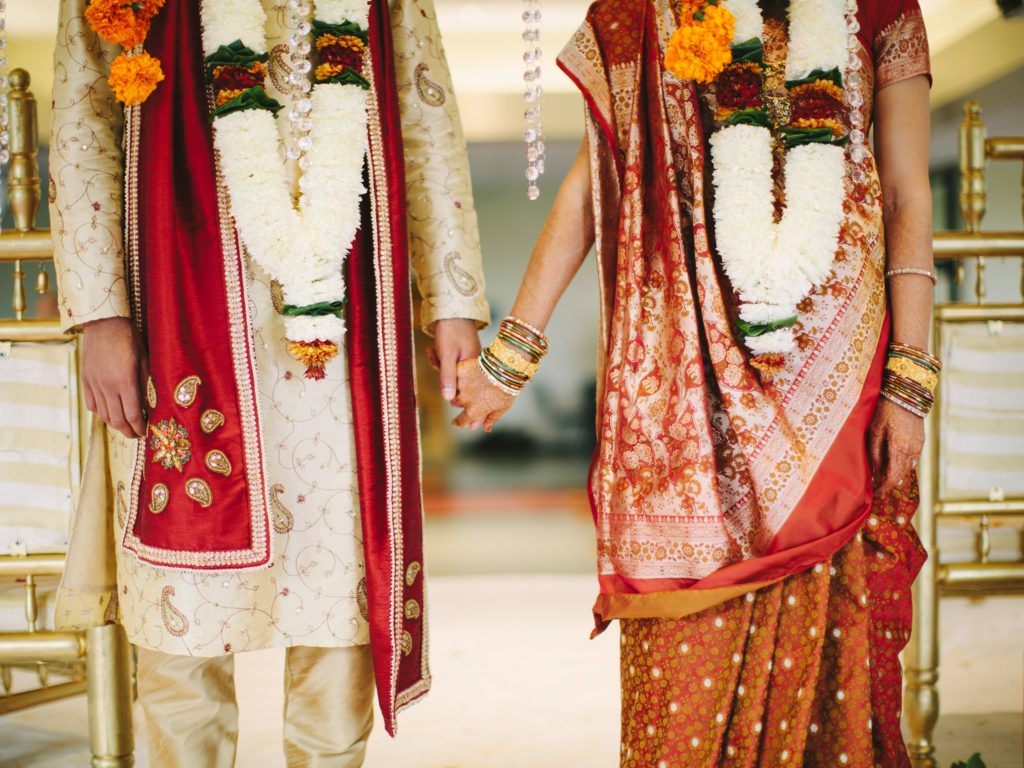
Saptapadi; the ritual of walking seven circles around the sacred fire is then performed by the bride and the groom that makes them officially husband and wife.
The Post-Wedding Ceremonies
Griha-Pravesh & Name Change Ritual; after the wedding the bride is welcomed in her new home. She gently kicks a vessel filled with rice grains so that they get spilled on the ground. While the newly wedded couple is seated the groom has to decide a new name for the bride. He craves a new name for his wife in a plate filled with rice grains. The second day of the wedding, the family of the bride visits the new home of their daughter and they invite the couple to come to their home. The groom stays at his in-laws home for a few days and after that the family of the groom comes to take their son and daughter-in-law back to their home.
Clothes Ritual; in this ritual the family of the groom gives five sarees to the bride for five different occasions such as a saree for the ‘Dare Puja’, a kanjivaram saree for the wedding ceremony, one saree for the Haldi ceremony, another for the griha-pravesh and the one which is given to the bride when she comes in the new home. She is made to seat over that new saree and later on that is again handed over to her. The reception of the wedding is a grand event that takes place in the evening. The cuisines are full of variety and lavish. All the guests are given coconuts and sweets when they do leave after the reception party.
TAMIL WEDDING

Tamil weddings have always been full of colors and vibrant. The beautiful attires of women have added more glitters to the grace of Tamil weddings. Tamil weddings are conducted in the state of TamilNadu. Lavish meals, grand venues, huge social gatherings are the elements which make the Tamil weddings a spectacular event.
The Pre-Wedding Ceremonies
Marriage Agreement; after matching the horoscopes of the girl and the boy if their families give their consent for the marriage then the family of the boy shows their agreement by giving the girl a new silk saree, cash, a coconut and betel leaves. The family of the girl as well gives the boy a new clothes and cash.
Paalikali Thalippu/Karappu; this ritual involves the making of seven clay pots the ladies of the bride’s family. These clay pots are decorated with ‘Kum-Kum’ and filled with seven nine types of grains known as ‘Nav-dhanyam’ and curd. Afterwards these grains are watered by seven married ladies which are finally thrown into a pond. It is believed that if the fish of the pond eats the sprouts sprouted from those grains, then it is an auspicious sign for a happy married life of the couple.
Sumangali Prathanai; in the Tamil traditions those women who pass away before their husbands are called as ‘Sumangalis’ because of their lucky fate that they passed away in a married status. In this ritual of Tamil wedding the family of the bride prays to all the sumangalis to make sure that this bride should also have this lucky fate. The women of the family are presented with gifts and saris.
Kalyanaponnu/Kalyanappillai; it is a ritual of holy bathe that the bride and the groom have to perform separately at their respective homes. After the bath both the girl and the boy are greased with scented oil and after performing this ritual both the bride and the groom-to-be cannot move out of their homes till the wedding ceremony.
Greeting the Groom; all the escorts and the attendants of the wedding from the groom’s side arrive a day before the wedding. They are welcomed with paan, supari, mishrey and sweet. The groom is specially welcomed by the mother of the bride by sprinkling rose water and by offering sweets to him.

Navgrah Puja; in this ritual the nine astral planets are being offered prayers as they are believed to rule the destiny of a person. For a happy married life of the couple the navgrah puja is done in order to receive blessings in their lives.
Nandi Shraartham; in this ritual eight or ten Brahmins are invited. These Brahmins pay homage to the ancestors first and then they are offered meal, sweets, dhoti-angavastram, paan, supari and coconut
Janavasanam; this is a formal arrival of the groom to the wedding venue. The groom is escorted by his family and friends in a decorated car. Traditional music harmonizes the whole atmosphere. When the groom arrives at the wedding venues he is welcomed by the brother of the bride who regards him with a garland of flowers.
Nischayadharatham; in this ritual Ganesha Puja is performed by the bride-to-be and her parents in the presence of a priest. The groom’s family gives a new saree to the bride. The priest puts a Tilak of sandalwood on the forehead of the bride and the pallav or Pallu /loose end of the bride’s saree is filled with coconut, supari, betel leaves, fruits, sweets, turmeric and kumkum. A garland of flowers is tied at the waistline of the bride.
The Wedding Day Ceremonies
Mangalsnanam; in the early and auspicious hours of the wedding day the bride and the groom has to perform the ceremonial bath ritual. The couple sits between the parents of the bride. The mother of the bride gifts her a 9 yards long mehroon colored saree and a dhoti, ‘vesthi’ called in Tamil. After the bath the ladies of the family perform an ‘Aarti’ in which they put sandalwood Tilak on the foreheads of the bride and the groom and anoint them with turmeric and kumkum and scented oils.
Gauri Puja; this ritual is performed by the bride who worships the Goddess ‘Gauri’ for receiving her blessings for a good husband.
Kaashi Yatra; a ritual in which the groom pretends to leave his worldly duties and gets ready to go to the pilgrimage Kaashi. Then the father of the bride intervenes and tries to convince the groom to obey his household responsibilities. The groom is then returned back to the pandaal for performing the further wedding ceremonies.
Pada Puja; when the groom comes back after performing the ritual of Kaashi Yatra, the mother of the bride washes his feet and welcomes him meanwhile the bride is brought into the pandal by her maternal uncles.
After the ritual of Pada Puja the bride and the groom exchanges their flower garlands. They are then seated on a a swing. The elder women of the family offer milk and bananas to the couple and they throw few rice balls in four different directions as a gesture of protecting the couple from any evil-eye. The ‘Kanyadaan’ ritual is then performed by the father of the bride, he gives his daughter’s hand to the groom. The groom is supposed to tie a string attached to a piece of turmeric and the bride ties the string on her wrist. After which she gets a new saree from the groom. Then the bride makes a short leave from the mandap to change her attire and gets dressed in the new saree given by the groom few moments back. When she comes back to the mandap the ritual of ‘Mangalsootram’ is performed by the groom. After the ‘Satapadi’ ritual in which the couple walks seven circles around the sacred fire, they finally announced as officially married. The couple then goes out of the mandap to look at the Pole Star and the star of Arundhati. After coming back to the wedding mandap the couple then offered dry rice to the sacred fire and then the groom puts a toe ring on the feet of the bride. The couple is then offered a drink prepared from a mixture of jaggery, cinnamon and black pepper mixed with water.
The Post-Wedding Ceremonies
Nagoli Vasthra Ritual; in this ritual the family of the bride presents a suitcase that contains new clothes for the groom. He is also gifted with a diamond ring from the bride’s family.
Grihapravesh; the new bride is welcomed by her new family. The mother-in-law performs an ‘Aarti’ for the couple and then the bride enters the home by tilting the vessel filled with rice grain.
Valeyadal Ritual; this ritual is performed by the sister of the groom in which she presents gifts to her new sister-in-law.
Reception; this is a grand event for the groom’s family where they invite the family and relatives of the bride as well. Guests, relatives, family members and the friends give gifts, sweets and blessings to the couple.
Sambandhi Virandh; this ritual includes the exchange of gifts, items in kind and cash between the family of the bride and the groom.
Sadva Puja Ritual; this involves; serving the first spoon of ‘Payasam’ by the bride to the women who are assembled in the home of the groom for sadva Puja.
Maruvidu Varudal; the newly wedded couple visit’s the parental family of the bride and the parents present many gifts to the couple. The couple is treated to an elaborated meal by the bride’s family. The family also packs food for the groom’s family (Kattusadam) . Few relatives of the bride accompany her to her new home and receive gifts from the groom’s family when they return back.
Now we are heading towards the West part of India, where the Goan Catholic, Gujrati, Maharastrian and Marwari Weddings are most prominent :
GOAN CATHOLIC WEDDING
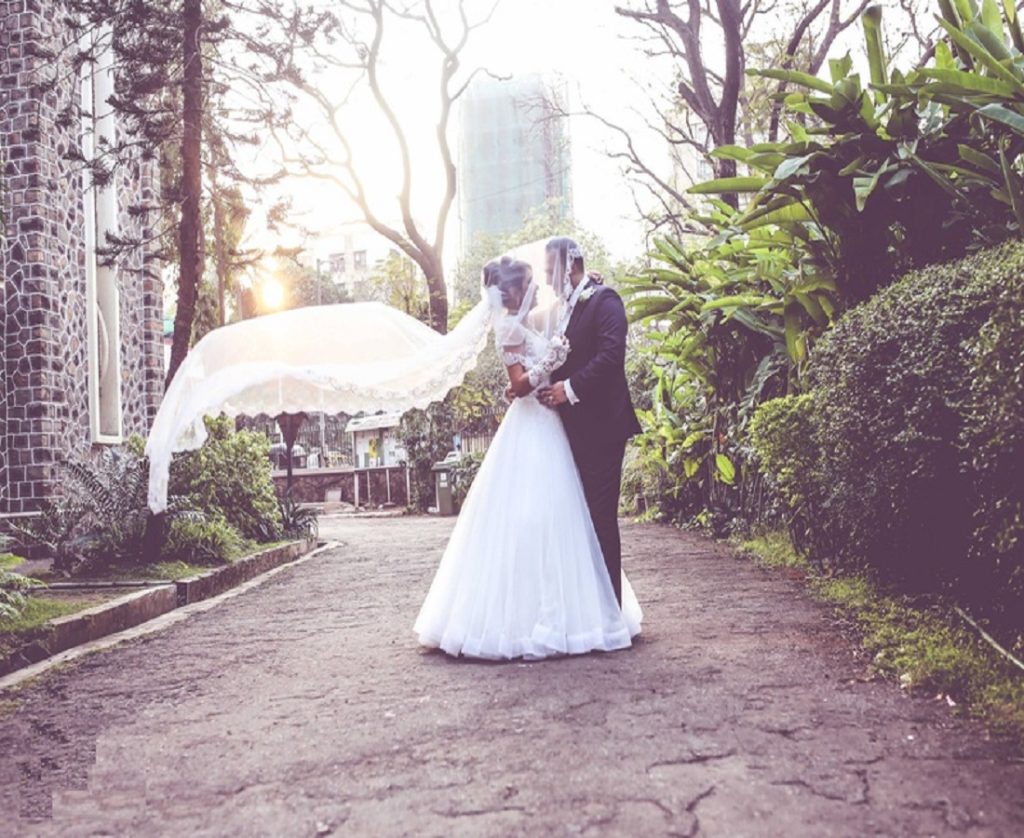
Goan Catholic Weddings are conducted in the state of Goa. Goa is a state famous for its hospitality and warmth with which it serves its visitors and guests. Goan wedding has always been grand, splendid and extravagant. These weddings are also known for their traditional customs and rituals such as Chuddo, Ros, Saddo etc. however now the Goan catholic weddings have become very much westernized in the manner of their execution.
The Pre-Wedding Ceremonies
Utor ; it is a formal meeting between the families of the girl and the boy. The two families make decisions regarding the wedding arrangements, dowry amount and other terms and conditions.
Saddo; it is a very important attire of the Goan wedding because it is the very first dress with which the bride initiates her first day in the groom’s home. This dress is either printed or plain with a red background. After the wedding when the bride comes for the first time in the new home this Saddo is placed over the shoulders of the bride. In fact the day when the tailor comes to the groom’s home to make the Saddo dress, all the close relatives and neighbors are cordially invited by the groom’s family. The cutting and the stitching of the Saddo dress is celebrated like a festival. A statue of Mother Mary along with the saddo fabric and some cash is placed into a plate. And when the tailor cuts the saddo fabric the family fire crackers in the joy.
Civil Registration of the Wedding; according to the Portuguese civil code followed in Goa the wedding is to be registered in the Registrar’s office in the presence of the family members, close relatives and friends and two witnesses. After the civil registration, the couple has to get married within the period of 3 months according to the religious catholic tradition.
Banns; before a week or weeks before the weddings the banns are read in the church. This is performed on the three consecutive Sundays in conformity with the Ecclesiastical law.
Chuddo; on the first day when the first Bann is read the maternal uncle of the bride-to-be invites her over the lunch. The is chuddo ceremony is performed by the maternal uncle if he is not present for the ceremony the maternal aunt can perform this ritual. The bangle seller (kokankar) is called over the home of the maternal uncle of the bride-to-be. He fits the bangles on the bride’s hands and other ladies of the family and the neighbor are also invited to participate in this ceremony. The bangles are to be worn in an order that is green, red, yellow, Folli (green bangle with yellow lines) and green, red, yellow respectively. None of the bangle must be broken, it is not a good sign to wear a broken bangle. These bangles are the symbol of a married life. Afterwards the kokankar is given some money, one coconut, rice and five bananas. Ladies present for this ceremony sing ‘Zotis’ which are traditional songs/prayers sung in the traditional and auspicious occasions.
Ros Ceremony; Apros’ is the first coconut milk that is applied over the body of the bride and the groom a day before the wedding ceremony. This ritual is performed separately at their respective homes. The parents first begin to apply Ros and then the other ladies, friend and relatives apply Ros over the body of the bride and the groom. Ladies sing the Zotis. After the ros is applied few ladies pour water from a pitcher over the head of the bride and the groom. Afterwards the bride can take a bath in private. Ros symbolizes purification and a farewell to the singlehood. Meanwhile the bride and the groom take a bath, the guests are treated with sweets prepared from jaggery, rice and coconut.
Bicarenchem Jevon; this is a very interesting ritual which is represented by the beggars. A lavish lunch is organized by both the families in the honor of the departed souls of the family. Many kinds of dishes are prepared some of which are; sambarachi koddi ; a very spicy curry cooked with prawns and dry unripe salted mangoes, bread and bananas, small ‘Oddes’ made up of rice and udad dal and in sweet ‘soji’ is served that is made up of wheat and sugar cooked in coconut juice. The lunch is served on the Jackfruit leaves called ‘patravallis’. Liquor and Beedis are also a part of this lunch. Before the chef begins to cook the meal for the lunch a coconut is broken by an elder family member in front of the home which signifies a good beginning. And after the meal is ready a separate plate with all the food items is served at first and kept outside the home. Once the crows start eating that meal then only the food is served to others. If the family does not perform this Bicarenchem Jevon then the beggars are given a full quantity of rice and some money.
Dennem; this is a custom in which the items in kind which are being gifted to the married couple or to the bride by her parents and family are sent to the home of the groom one day before the wedding. Items like bed, dressing table, bride’s clothes and kitchen ware are sent to the groom’s home along with the traditional sweet called ‘Fulache Vojem’ and fruits.
The Wedding Day
On the wedding day the bride is beautifully dressed in a pretty gown and the groom dressed in a formal suit. Before they enter into the church for the wedding ceremony, the best is there to welcome the bride with a wedding bouquet. Then the couple enters the church, there are two witnesses for the wedding ritual from either side. After the priest says the prayers the bride and the groom give their consent and accept each other as their man and wife. The groom confirms his wedding vows and the both the bride and the groom put wedding rings on their left ring fingers. Exchanging the ring depicts a lifetime commitment from both of the bride and the groom. The priest gives his blessings to the married couple. Everyone claps and give their blessings to the newly wedded couple. The couple then signs the marriage resister and leaves for their home.
The Post Wedding Rituals
Arrival and Reception; When the bride reaches the home of the groom, the groom’s mother welcomes the bride and gifts her a gold chain and places the saddo on her shoulders. Zotis are sung by the females of the family and relatives. On the same day the reception is organized by the family of the groom. A huge wedding cake is brought by the groom’s family. The couple cut the cake and the guests give their blessings and gifts to the couple. At the end of the reception party the couple kisses each other.
Xim ; after the reception party the few of the relatives of both of the family along with family members go to the junction of the road and draw an imaginary boundary line that is called the Xim in Konkani. Both the families stand on the opposite side of each other. Then the family of the groom gifts two bottles of Liquor for the family of the bride as a symbol of creating harmony and love between each other. These liquor bottles have to be emptied before the families leave the venue. Then a family member steps upon the boundary line and goes to the side of the groom’s family to invite the married couple for dinner which is called ‘apovnennm’.
Muino; the newly wedded couple visits the bride’s home for a reception called Muino. The mother of the bride welcomes the couple and take them to the hall/room where they bow down for a prayer. The groom puts some money under the cushion which is later on taken by the servant of the house. The couple has to take five meals at the home of the bride.
Ojem; when the couple returns back from the bride’s home they are given Ojem which are the kind of gift packs containing 1000 balls ( made up of wheat flour, jaggery and coconut) and bananas. This Ojem has to be distributed among the relatives and the neighbors of the groom. There are different kinds of Ojem given to the bride for different occasions.
GUJRATI WEDDING

Gujarati wedding takes place in the state of Gujrat. Gujarati wedding is very expensive affairs because they are the projection of extravagance, show-off buzz and numerous expenses. The Gujarati attires are popular nationwide and the traditions of weddings are a big attraction. The bridal attire is outstandingly amazing and different. The attire is purely ethnic and traditional. Attires like Gujarati saris, bandhani sarees, panetar, gharchola. The groom is dressed in dhoti Kurta. A bhandhej dupatta is preferred to be worn around the neck.
The Pre-Wedding Ceremonies
Sagaai; this ceremony takes place at the home of the groom where the family and relatives of the bride-to-be are cordially invited. The family of the girl presents gifts, items in cash and fruits for the family of the boy.
Griha-Shanti Custom; this is a family puja conducted at the respective homes of the bride and the groom-to-be. The whole family pleases the deities and seek their blessings for a happy married life for the new couple.
Mandap-Mahurat; the family of the bride performs the puja for Lord Ganesha to seek the blessings. Gujaratis are very much religious and traditional in their thinking that is why they do not begin any auspicious work/task without offering the prayers to Lord Ganesha.
Pithi Ceremony; in this ceremony the paste of turmeric and mustard oil is applied over the body of the bride and the groom-to-be. The ladies of the family and relatives perform this ritual. Ladies sing their traditional songs while the turmeric paste is applied.
Mehendi Ceremony; this ceremony is much awaited and most celebrated among the Gujaratis. All the young girls and females do participate in this ceremony. Henna or Mehendi is applied on the hands and feet of the bride. All the females of the family, neighbor and relative get together. They sing traditional folk songs and dance as well.
Garba; without Garba any Gujarati event is incomplete. Garba is basically the folk dance of Gujarat in which the females dance in circles and groups. They also play ‘Dandiya’ which is done with the sticks. All the ladies of the family and neighbors are invited for Garba. It is a gesture of joy and happiness.
The Wedding Ceremonies
Ponkvu Ritual; in this ritual the groom is welcomed to the wedding venue. His mother-in-law welcomes him by performing a little ‘Aarti’ and tries to grab his nose as a gesture of fun. This is a traditional ritual that signifies that the groom should be behaving very humbly when he comes to take the hand of the bride at her home. That is why the mother of the bride grabs the nose of the groom to remind him to be humble.
Jaimala Ceremony; this is the exchange of flower garland by the bride and the groom. This ritual is performed twice at the wedding ceremony.
Madhuparka Ritual; in this ritual the family members of the bride wash the feet of the groom. The groom is given milk with honey to drink. And meanwhile the ritual is performed the youngsters (sisters and cousins of the bride) try to steal the shoes of the groom. This is called ‘Juta-Churaai’ , the sisters ask for heavy cash to return the shoes to the groom and return the shoes only when the cash is given to them.
Kenya Aagaman; when the above ritual is done it is the time for the bride to enter the mandap. The maternal uncle of the bride accompanies her till the lagan-mandap. When she sits down a screen is put between her and the groom. As the priest continues to chant the mantras the screen is slowly lowered down and finally the couple once again exchange the flower garlands in front of the sacred fire.
Kanya Daan; this is a ritual in which the father of the bride gives her hand to the groom. The father of the bride washes the feet of the groom and puts the hand of his girl in the groom’s hands.
Hasta Milap Ritual; in this ritual the groom’s scarf is tied to the loose end of the bride’s saree. This signifies the marital union of two individual. All the guests bless the couple with flower petals and rice grains. The priest invokes the blessing of the Goddess Parvathi and Lakshmi.
Mangal-Pheras ; now it is the time for the couple to stand and take the seven circles around the sacred fire. The couple seeks the blessing of the Lord of Fire (Agni Dev). The priest tells the couple about the significance of the seven pheras they have to take. The first four pheras stand for ‘dharma’, ‘karma’, ‘kaam’ and ‘moksha’.
Saptapadi Ritual; the groom then takes seven vows of marriage. He promises the bride and her family to take care of her for the whole of her life.
Saubhagyawati Bhav; in this ritual seven married women whisper good wishes and blessing in the right ear of the bride. It is believed to bring good luck for the bride and the blessings are whispered so that no evil-intentional harm the blessings.
Chero Pakaryo; in this ritual the groom tows the saree of his mother-in-law as she moves after performing all the rituals. This act of the groom is a gesture as if he is seeking for some gifts from his mother-in-law.
Subh Ashirwad; now the officially married couple stands to seek the blessings of the elders and the family members. They touch the feet of the elders, and receive blessings, gifts and jewelry as well.
The Post Wedding Ceremonies
Vidaai; it is the departure time for the bride from her paternal home. All the family members and relative see -off the bride with tears in eyes. The brother of the bride accompanies her till her till the exit of the wedding venue.
Ghar Ni Laxmi; the Gujarati bride is treated as a Goddess Lakshmi who brings wealth and prosperity in the home that is why the bride enters the home by kicking a vessel filled with rice grains symbolizing spreading wealth inside the home.
Aeki Beki; this is a fun filled ritual that involves the bride and the groom to play a small game. A big tray filled with kumkum colored water is placed in front of the couple. Then a ring and some coins are put into the water. Now the one who will find out the ring at first in the minimum time; would be the winner of the game and he/she would also be considered to dominate the other partner in their married life.
Reception; it is a grand occasion for the family of the groom. The newly wedded couple is greeted happily. A grand stage is set for the couple where they can sit and meet the guests of the reception party. Everyone meets the couple and give their blessings. Gujarati cuisines are the main attraction of this occasion.
MAHARASHTRIAN WEDDING

Maharashtrian Weddings are conducted in the state of Maharashtra, weddings also known as Marathi wedding. These weddings are a great symbol of values, traditions and customs. Very simply conducted but very beautiful to see. Entering into the Grihastra-Ashram by the means of marriage is supposed to be a new and unique phase of life according to the traditions of Maharashtra.
The Pre-Wedding Ceremonies
Shaker-Puda; this ceremony takes place a month before the wedding. In this ritual first the bride-to-be, her parents and her sister (karvali) sit on a wooden plank. Then the mother of the groom applies Kum-Kum Tilak on the forehead of the bride, gifts her a new saree, green colored bangles and sakhar padu (this is a packet of sugar). Then the same ritual is performed by the groom’s family. The groom, his parents and sister sit on the wooden plank, the mother of the bride applies haldi-kumkum Tilak on the forehead of the groom, gifts him clothes and sakhar page. Afterwards the girl and the boy exchange the rings as a confirmation of their engagement.
Kelvan; this ritual involves a puja in which the ‘kul-devtas’ (family deities) are being invoked by the families of both the bride and the groom’s side. Family seeks blessings from the kul-devtas for a happy married life of their children.
Gadagner; this is a custom of organizing a lavish meal (lunch/dinner) by both the families of the bride and the groom-to-be at their respective homes for their relatives, friends and neighbors.
Halad Chadavane Ritual; this ritual is performed a day prior to the wedding ceremony. During this ceremony five ‘suvasinis’ (married women) take two mango leaves and dip them into the paste of turmeric and then apply it all over the body of the bride, right from the feet to her forehead. This activity is performed thrice at times. Same ritual is performed at the groom’s home.
The Wedding Ceremonies
Ganapati Pujan; the lord Ganesha is worshipped on the day of the wedding by the respective families of both the bride and groom. It is to seek a blessing from Lord Ganesha in order to have a peaceful execution of wedding ceremony.
Simant Pujan; this ritual is performed when the groom and his relatives reach the venue of the wedding. At the entry gate of the wedding venue the groom and his escorts are welcomed by the mother of the bride. She washes the feet of the groom, performs Aarti and offer him sweets or ‘madhupak’(i.e. A mixture of honey and curd). Then other guests escorting the groom are also offered the madhupak. Then the groom is taken inside the pandal where the father of the bride gifts him new clothes, gifts and jewelry.
Gauri Pujan; for this ritual to perform the girl is dressed in a yellow colored saree gifted by her maternal uncle, she wears ‘mundavalya’; string of beads or pearls and flowers. The bride prays to the Goddess Parvati. She takes rice grains in her palms and seek blessings from the goddess.
Laguna Muhurt; when the auspicious hour arrives on the wedding day according to the priest, then the groom stands on a mat and faces towards the west direction holding a garland. The priest holds the antarpat (a cloth screen) a chants ‘mangalashtaka’. The bride then makes her arrival with her maternal uncle and stand at the other side of the antarpat holding another garland in her hands. The mother of the bride ties a string of black beads (eksari) around the neck of the bride. When the priest ends with the last verse of mangalashtaka then the antarpat is removed. Now the couple exchange the garlands and the karvallis sprinkle holy water over the couple.
Kanyadaan; this ritual is performed by the parents of the bride. They do give their daughter’s hands to the groom. The mother of the bride pours holy water on the hand of the bride while handing over to the groom. The bride’s parents afterwards worship ‘Laxmi-Narayan’ as the couple also is considered to be the avatar of the god and goddess.
Akshataropan; in this ritual the couple holds rice grains in their left hands and shower them with their right hands and express their various desires. Family members and the priest pray for the couple that their every desire gets fulfilled.
Mangalasutra Bandhan; the groom ties the mangalsutra around the neck of the bride while the priest chants the Vedic mantras. The bride applies a Chandan Tilak on the forehead of the groom in return.
Vivah & Lajja Hom; the couple takes the oath of being married in front of the holy fire ‘agnisakshi’. The groom then puts ghee and fistful of puffed rice (lahya) in the hands of the bride. Then the couple has to offer those rice grains to the holy fire as a sacrifice.
Saptapadi; now the groom hold the hand of the bride and begins to encircle the fire seven times. There is small heap of rice grains after every two feet which the coupe is supposed to tread gently. After the seventh circle the couple is supposed to literally touch their foreheads which symbolize to have the same mindsets for any decision making. To add a little fun to the ceremony the brother of the bride twists the right ear of the groom and remind him about the groom’s responsibilities towards his sister. Now the couple takes the blessings of the family members and the elders.
The Post Wedding Ceremonies
After the wedding ceremonies are preformed, the ‘Manpan’ ritual is performed in which the family of the bride and the groom exchange gifts between each other. ‘Varat’ is the next ritual in which the bride is given a tearful farewell by her family. According to this ritual the groom has to pick up the idol of Goddess Parvathi and take it to his home. When the newly wed couple arrives the home they are welcomed with a traditional Aarti. This is called ‘Griha-Pravesh’. The bride tilts a pitcher filled with rice grains and dips her feet in kumkum filled in a big Thali. Then she steps out and walks down inside the home while leaving the impression of her feet colored in red Kum-Kum. Then the ritual of ‘Soonmukh Baghane’ is performed by the mother-in-law of the bride. At this the mother-in-law looks at the face of the bride through a mirror and then combs her hair to create a new mother-daughter relationship with the bride. The next day of the wedding the five suvasinis perform the same ritual of ‘Halad Utarvane’ but this time they do it in a reverse order that spreading the two mango leaves dipped in turmeric paste from the forehead to the feet of the bride and the groom. Meanwhile the mother of the groom unties the sacred thread called ‘Kankan- halkund’ that was tied during the kanyadan ceremony.
MARWARI WEDDING
Marwari Wedding belongs to the royal state of Rajasthan and conducted by one of the most richest communities of India. Marwari wedding is commixture of traditions, customs and rituals and most important symbol of colors, royalty and splendor.
The Pre-Wedding Ceremonies
Tika; this refers to the formal engagement ceremony of the girl and the boy. This ceremony takes place in the home of the groom. The father, brother and close male relatives of the bride-to-be visit the place of Tilak ceremony. The brother of the bride applies Tilak on the forehead of the groom-to-be. The groom is gifted a sword, clothes, sweets, fruits and cash by the family of the bride.
Ganpati Sthapana; before initiating any wedding ceremony the family of the bride and the groom organize a Havana-puja at their respective homes in which they worship the Lord Ganesha in order to seek his blessing for a peaceful and happy process of the wedding ceremonies.
Baan; this is a ritual that is performed till the day of the wedding. Bann is basically the number of times, the paste of turmeric would be applied to the bride and the groom. The priest calculates the number of the Bann, and informs the family of the bride and the groom. Usually there are seven or five Baan fixed for the bride and the groom.
Mehfil; this is an integral ritual of a Marwari wedding which is held separately for the men and the women of the family. In this ceremony mehfils are held in which the traditional ‘ghoomar’ dance and folk music is organized. The bride is the central attraction of this Mehfil. She is given a separate and a comfortable seat from where she can watch and enjoy the performances. All the ladies of the family and relatives sing folk songs, dance and make the ceremony fun filled.
Mahira Dastoor; this ritual is performed by the maternal uncle and aunt of the bride. A day or two before the wedding the maternal uncle along with his wife comes to the bride’s home and presents gifts, clothes, cash, jewelry and fruits to the all the family members of the bride. This ritual had an old significance according to which at the time of the wedding it the duty of a brother to help his sister in bearing the expenses which are quite high at the time of the wedding.
Janev Ritual ; this ritual is only essential for the groom. The groom wears a saffron colored attire and have to perform a havan puja. During this puja he has to wear a sacred thread that is called the Janev. Here the groom is given two options either to become a ‘yogi’ or a ‘bhogi’ (householder) . The groom gives his consent for the first option but his maternal uncle intervenes and convinces the groom to fulfill his duties as a householder.
Pallar Dastoor; in this ritual some of the closest relatives of the groom visit the home of the bride to give her the wedding attire, jewelry and other essentials. The bride then gets ready for the wedding ceremony.
Nikasi Ritual; in the evening the groom gets ready for the wedding. He ties the ‘sehra’ (headgear). It is a custom that the brother-in-law of the groom would assist him in wearing his wedding dress and he would also tie the headgear for the groom. In return of this the brother-in-law is given cash, clothes and gifts by the parents of the groom. After the groom is ready the mother and the sisters of the groom perform a puja. They put kumkum Tilak on the forehead of the groom. Give him sweets and then the groom and all the family members leave for the wedding venue.
The Wedding Ceremonies
Baarat; a Rajasthani baarat is consists of only the male members of the family. The baarat looks very royal and traditional when all the male members including the groom carries a majestic sword. To carry a sword is a traditional custom that symbolizes royalty and bravery of the Rajasthani males. The groom is usually riding a mare and sometimes an elephant.
Toranachar; the main entrance of the wedding venue is decorated with Toran. As per the ritual the groom has to hit the toran with a stick of the neem tree. Then the mother of the bride performs Aarti, put a Tilak on the forehead of the groom and welcomes him inside the wedding pandaal.
Jaimala; after the baarat and the groom is fully settled the bride arrives in the pandaal. Her face is totally covered with her heavy ornate dupatta. Then the groom and the bride exchange the garlands of flowers.
Granthi Bandhan; this is called the tying of the sacred knot between two individuals. The loose end of the bride’s dupatta is tied to the scarf of the groom. This is done by the sister of the groom or by the priest.
Paanigrahan; this involves the groom to take the bride’s hands into his and need promise to the bride that he would take care of her in all the odd and good times.
Pheras; the groom and the bride gets up to seven circles around the sacred fire. The priest chants Vedic mantras. In a Marwari wedding the couple takes only four circles around the sacred fire. The rest of the three they already take at the time of Jaimala ceremony.
Ashwarohan; the bride has to put her right foot on the grinding stone after which her brother gives her fistful puffed rice. The bride then passes those puffed rice to the groom and then offer to the sacred fire. This ritual signifies that the brother of the bride wishes the newly wed couple all the good things in their life, he prays for their prosperity, good health and wealth.
Vamang sthapana; when the sacred fired in ignited the bride initially sits on the right side of the groom and after performing the above rituals the groom requests the bride to shift to his left side, this is known as vamang sthapana. Vamang means the left side of the body and sthapana stands for shifting. Hence the groom requests the bride to shift to his left side since the heart is also on the left side, the groom accepts the bride to be established in his heart.
Sindur Daan; after the groom performs the vamang sthapana ritual he then performs the Sindur Daan ritual in which he fill the center partition of the bride’s hair with vermilion (sindoor). This makes the bride the officially married to the groom.
Satapadi; this is the ritual of taking seven vows of marriage while walking seven steps together. Both the bride and the groom make promises to each other to accept and adjust in their married life with utmost dedication and love. Further the ‘pherphatta’ ritual is performed by the sister of the groom. In this she embellishes the bride’s hair known as ‘sargunthi’. This ritual symbolizes that the groom’s family has accepted the bride as their new member.
Angel Bharaai; in this ritual the father of the groom puts a bag full of money into the lap of the bride. Out of which the bride gives some amount of money to her sister-in-law and to her groom as well. This ritual is performed to remind the bride about her responsibilities as a daughter-in-law of the family and also to welcome her as a new member of the family.
Paharvani; now the groom is given an ‘Aasan’ to sit covered with a new cloth. The ladies of the bride’s family put Tilak on the forehead of the groom, give him cash and gifts. Then the ladies involve the groom in a fun filled poems, dohas and shlokas reciting session. The father of the groom is also given a ‘kachola’ that is a silver utensil.
The Post-Wedding Ceremonies
Bidaai; the family of the bride gives her a farewell. The bride worships the threshold (dehleez) of her parental home and breaks a ‘Diya’ that is an earthen lamp. The maternal uncle of the bride puts the bride on his shoulders and makes her sit in the car. The bride is not supposed to walk down to the car. Then the brothers of the bride push the car and the car starts to run. The bride puts on her veil for which she would give a gallery gift from her groom at the new home.
Dwaar Rukaai; this ritual is performed by the sister of the groom. She stops the newlywed couple at the entrance of the home and asks for a big gift from the bride. The bride then gives her cash, new clothes and jewelry as a gift. Then only the sister-in-law allows the couple to get into the home.
Grihapravesh; the bride is welcomed by a puja. The bride puts on the veil for the further ceremonies.
Pagelagani; the next day of the wedding all the female family members, relatives and neighbors to come to the home of the groom to be introduced to the new bride. The bride is still in the veil. All the members and the groom give gifts to the bride and then finally her veil is removed.
There are Religion based weddings also, which are briefly described at below:
HINDU WEDDINGS
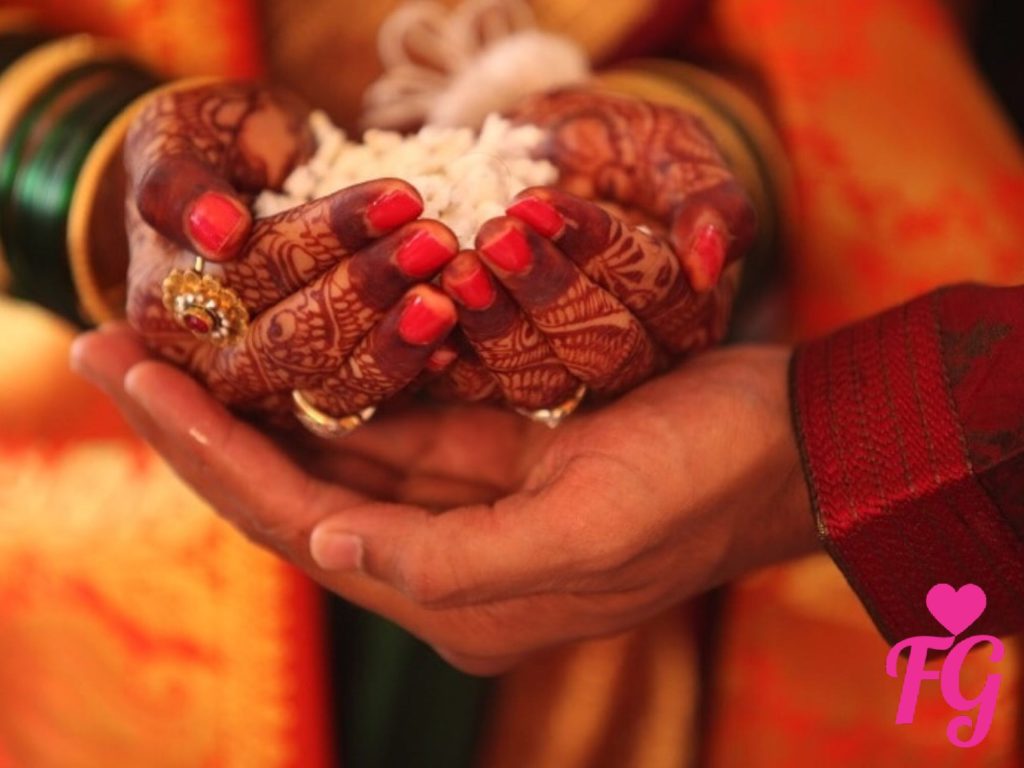
The Hindu weddings are the symbol of sacred Vedic rituals and traditions. These weddings lay a great emphasis over three significant elements and these are; harmony, growth and happiness. Hindu weddings are prominently conducted in the North India. A month prior to the wedding ceremony the ‘Mangni’ is fixed that is a formal engagement of the girl and the boy. A number of rituals and ceremonies catch the attention towards the Hindu Weddings such as the ritual of ‘JaiMala’ (exchange of garlands), ‘Madhupak’ (offering the curd and honey mixture), ‘Kanyadaan’ , ‘Saptapardi’, ‘Jalastnchana’ (blessing to the couple), ‘Sindoor’, ‘Aashirwaad’, ‘Mehendi’ and ritual of ‘Mangalsutra’. Hindu weddings symbolize the urge to seek respect and honor in a married relationship. To cultivate appreciation for values, sacrifice, service and knowledge. And most importantly to follow Dharma in the married life. The couple is motivated to nurture their bond with utmost love and friendship.
MUSLIM WEDDINGS
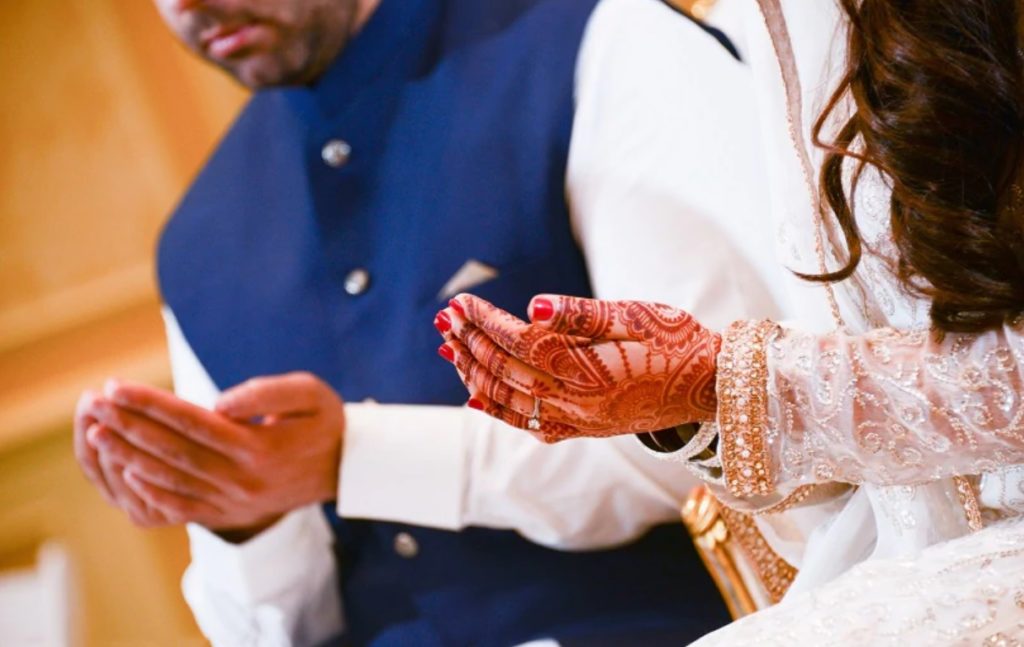
Muslim weddings are popularly known for the hospitality and simplicity. The way the guests are treated in the Muslim weddings is quite remarkable. Traditional attires like Sherwani and sharara glorify the beauty of the men and the women in these weddings. There is a great stress given to the approval of the man and the lady for becoming the life partners, in the presence of the witnesses. These weddings are colorful and vibrant. Soft musics preferably like Gazals and instrumental music soothes the atmosphere of the wedding. Muslim weddings have colorful rituals and customs such as ; ‘Mangi’ that is a formal engagement of the girl and the boy. ‘Mehendi’, ‘Mahr’ that is a royal and elegant welcome of the groom and the Baraat by offering sharbat and playing traditional music. ‘Nikaah’ the main wedding ceremony performed in the presence of the ‘Maulavi’ and in the conduct of ‘Holy Quran’. Dinner, prayers and ‘Aarsimashaf’ are the wedding rituals. The bride and the groom look at each other through a mirror, the Holy Quran is placed in between them. ‘Rukshat’ is the farewell to the bride by her parental family. ‘Valimah’ is the grand reception from the groom’ family
SIKH WEDDINGS
Sikh weddings are specifically known for the ceremony called ‘Aanad Karaj’ which means a Blissful Union. And the blissful union should not be biased by any thought of casticism and ethnicity as far as the boy and the girl agree to be together and have faith in Sikhism they can get married under the holy conduct of Anand Karaj. The Official Sikh Code of Conduct called as the Rehat Maryada clarifies it more clearly that no thought should be given to the castes, race, ethnicity or lineage of the perspective spouses. The Rehat Maryada also strictly restricts any giving or taking of dowry. Sikh weddings are the symbol of purity and simplicity. Rituals are also being performed in these weddings like ‘Kumrai’ that is a formal engagement of the girl and the boy. This ceremony generally takes place in the Gurudwara ( or otherwise at the home of the bride-to-be) where the ‘Ardaas’ (the holy prayers) Kirtan and Langer (common meal) is performed. The groom is given a Kara, Kirpan and sweets in this ceremony. Sikh Weddings are usually three day affair. During which rituals of ‘Haldi-Uptan’, ‘Mehendi’, ‘Sangeet’ are also performed. The main wedding ceremony is always performed in the Gurudwara and only in the day time. In the presence of ‘Guru-Granth Sahib’ the Ardaas is performed the couple exchange their garlands and with utmost simplicity the wedding ceremony is accomplished.
CHRISTIAN WEDDINGS

Christian wedding is truly a symbol of love and eternal union. Christian wedding follows their Holy Bible and truly believe that the marriages are made in heaven by God alone. The man and the woman are believed to become ‘One Flesh’ after tying the knot of marriage. The pre wedding rituals of the Christian wedding include the ‘Engagement Ceremony’, groom’s ‘Bachelor Party’, ‘Bridal Shower’ in which only females are invited, they dance, sing and enjoy the party ‘Toast Raising’ is an essential part of these parties. In some Christian wedding the ceremony called ‘Haldaat Ceremony’ is also performed in which the turmeric paste is applied on the body of the bride. In Goa, it is known as ‘Ros Ceremony’. The wedding ceremony is performed in the Church by the Priest who reads the ‘Psalms’ from the Holy Bible and gives his blessings to the couple. ‘Reception’ is the last and grant party hosted by the family of the groom in the evening of the same day of the wedding. ‘Toast Raising, ‘Cake and Drinks’ are the attraction of this reception party.
Indian weddings are not less than any festival. Any wedding in India is always much awaited and much enjoyed because the elements that are involved in the Indian weddings are very much compelling and have the specialty to bring the people together. Weddings in India are well conceptualized, conducted and finally celebrated. Various rituals, customs, traditions and ceremonies give a meaningful significance to those weddings. Each Indian wedding represents a unique way of culture and traditions of different places of India. Not only the traditions but the ceremonial songs or music, dances, attires, decoration even the invitation cards add so much excitement to the wedding occasion. However the marriage can also be executed in a very simple manner but the way a marriage is conducted in India, it truly makes a marriage event memorable and colorful for the whole life.




